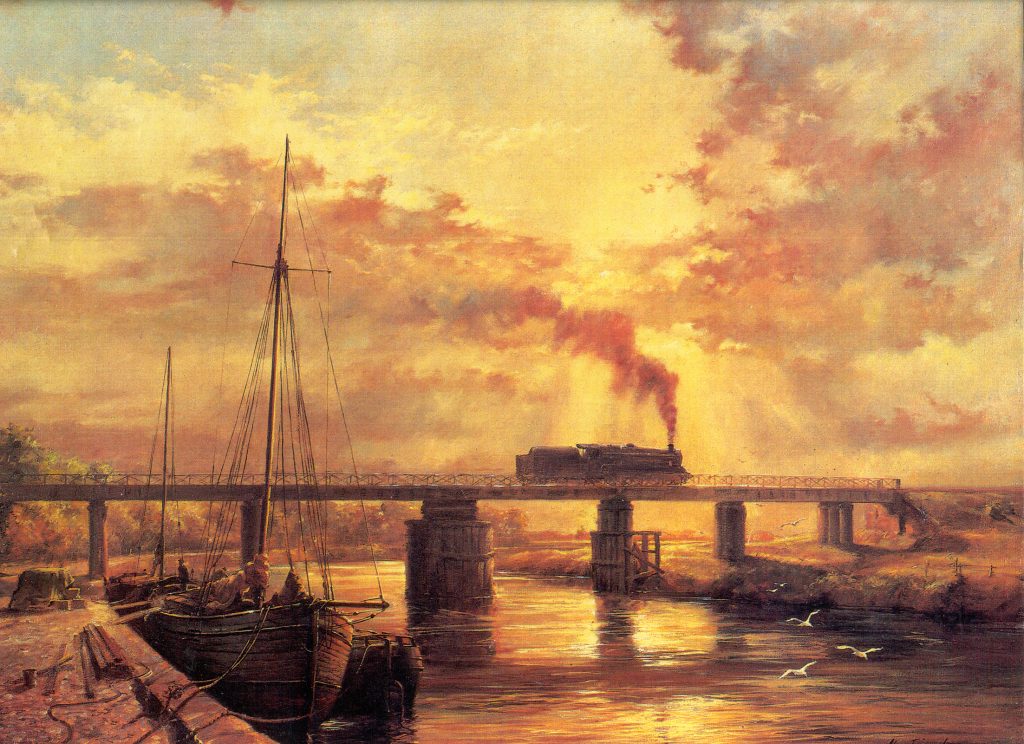
A Black Five makes it’s way towards Preston over the Douglas Bridge ©ITC
By 1855, Southport had railway connections to Liverpool in the South and Wigan to the East but it wouldn’t be until 1882 that the West Lancashire Line to Preston fully opened.
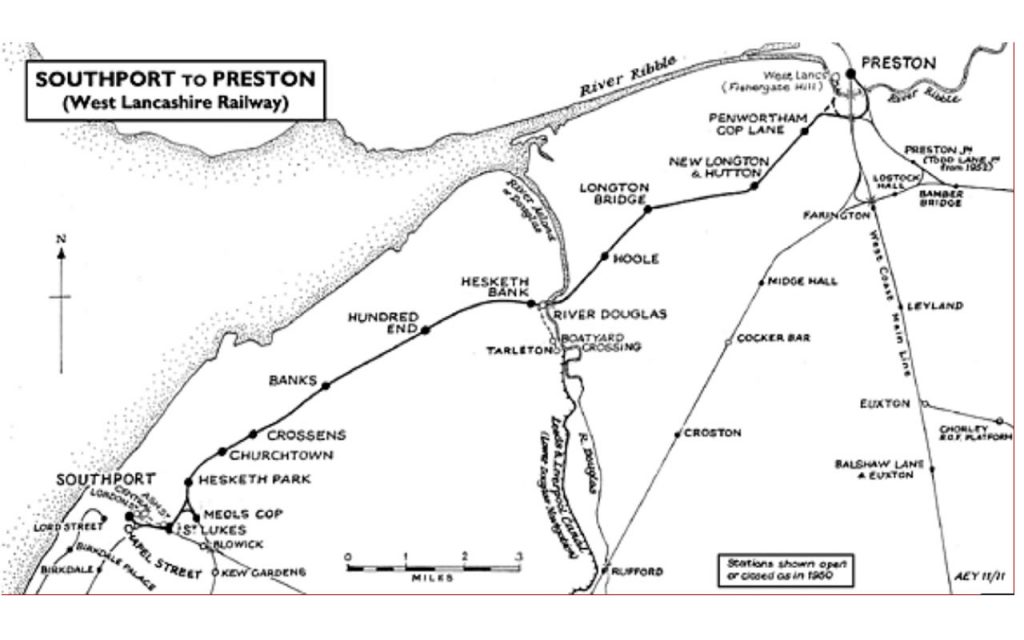
Southport Borough Corporation was extremely savvy in requiring that no level crossings would be allowed in the Borough as the six on the Liverpool line and one on the Wigan line were already causing significant traffic and safety issues. They also required a road bridge to be built in the fields South of Churchtown to permit planned residential development in the area and required the line to be in cuttings elsewhere so that road bridges could be of a lower height. In total six road overbridges and one rail bridge were constructed within the town.
At Southport, the original terminus station was at Derby Road, some distance from the town centre and the the station of the Lancashire and Yorkshire’s lines at Chapel Street.
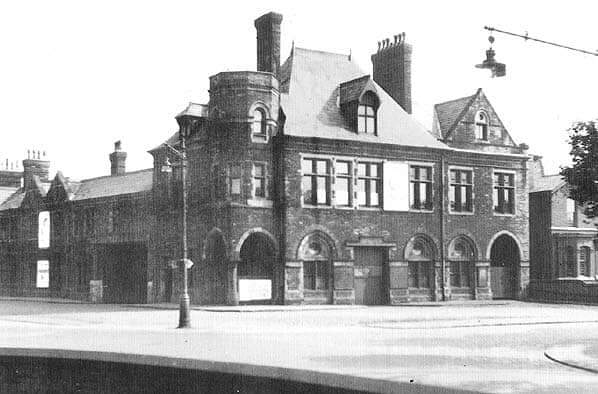
Southport Central (Derby Road) Station.
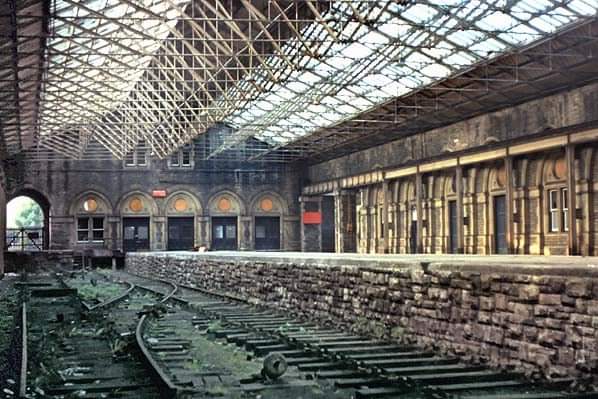
Southport Central two platform station part demolished.
Following ongoing financial difficulties, the Line was bought out by the Lancashire and Yorkshire Railway and in 1901 all passenger services were transferred to an enlarged Station at Southport Chapel Street; Central Station was renamed as Kensington Road Goods Depot.
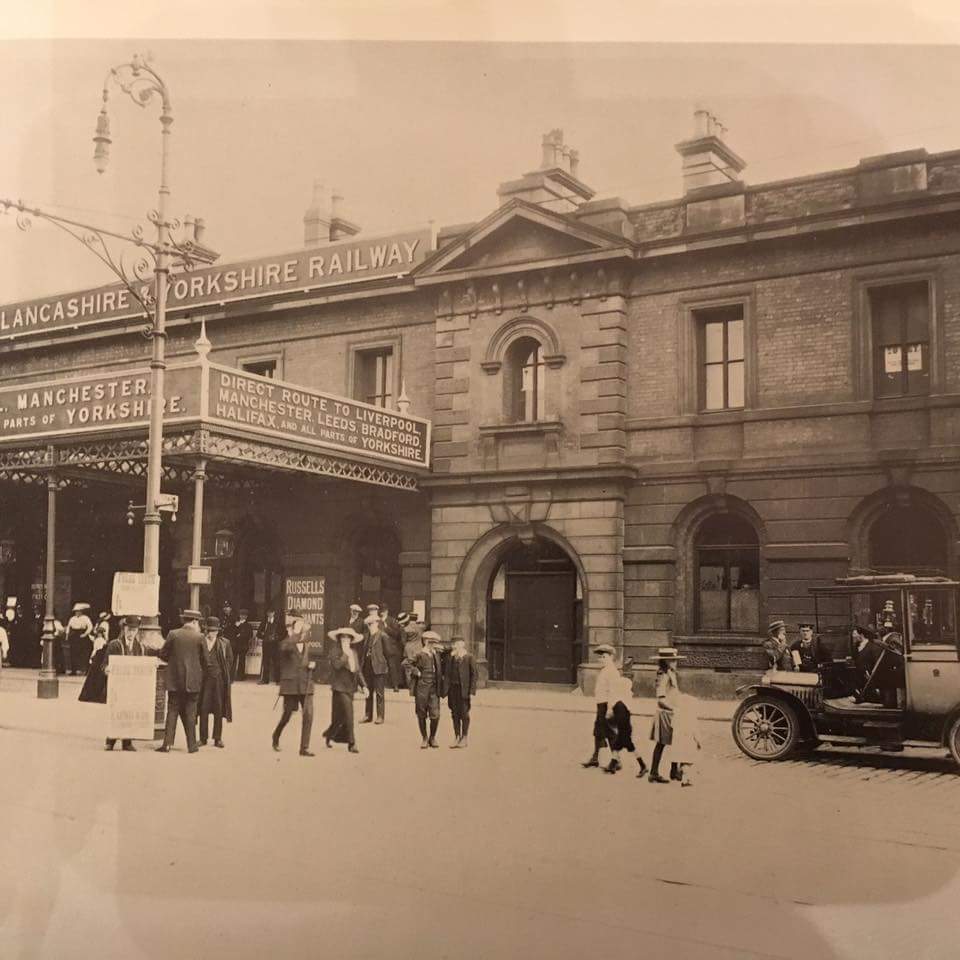
Southport Chapel Street 1910
Southport Station was expanded to some eleven regular platforms and two long excursion platforms that could accomodate fifteen carriage trains many of which would arrive especially in the Summer via the West Lancashire line from the North East and Scotland.
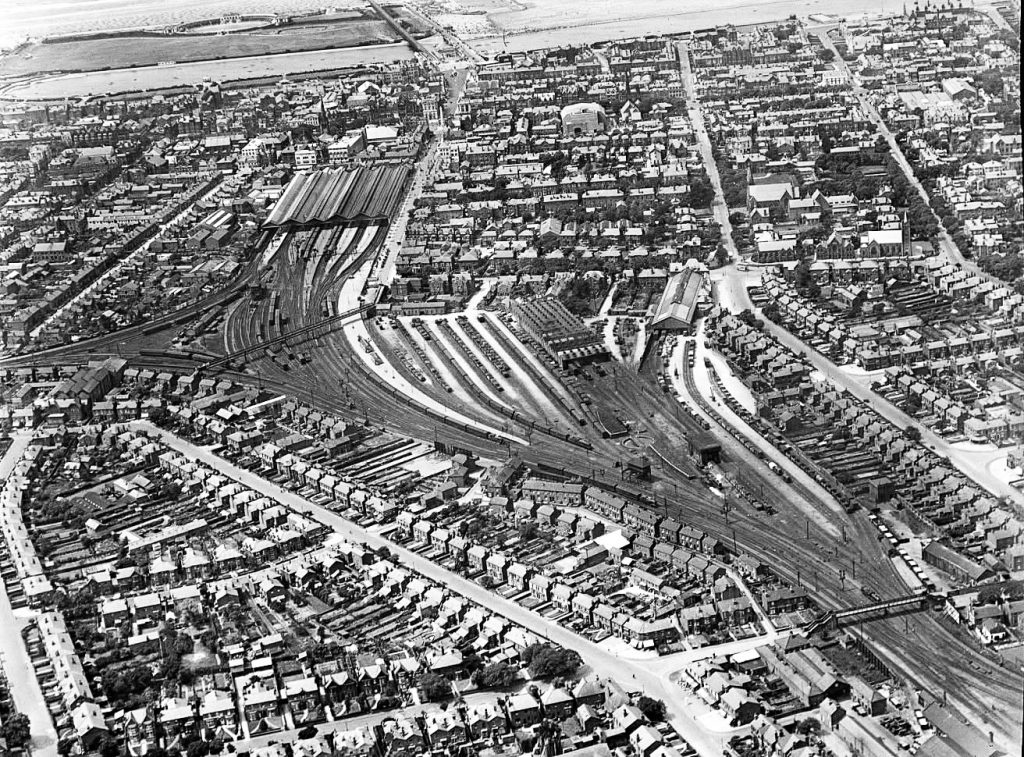
An aerial view of Southport Chapel Steet Station in it’s prime (top left) with the former Central Station (centre right) with the adjacent six road engine shed to it’s left. Centre left are the lines to Liverpool whilst bottom right are the lines to Wigan, Ormskirk, Preston and Blackburn.
A Preston Bound train leaves Chapel Street
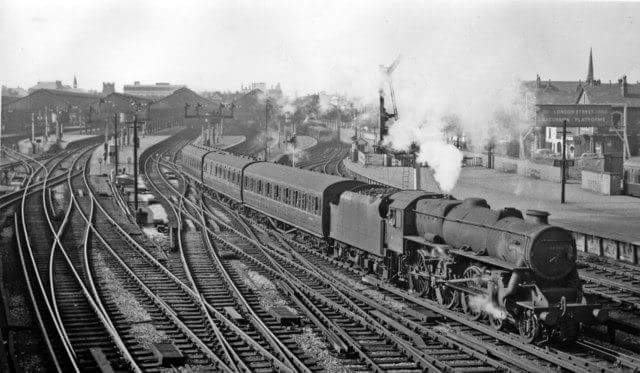
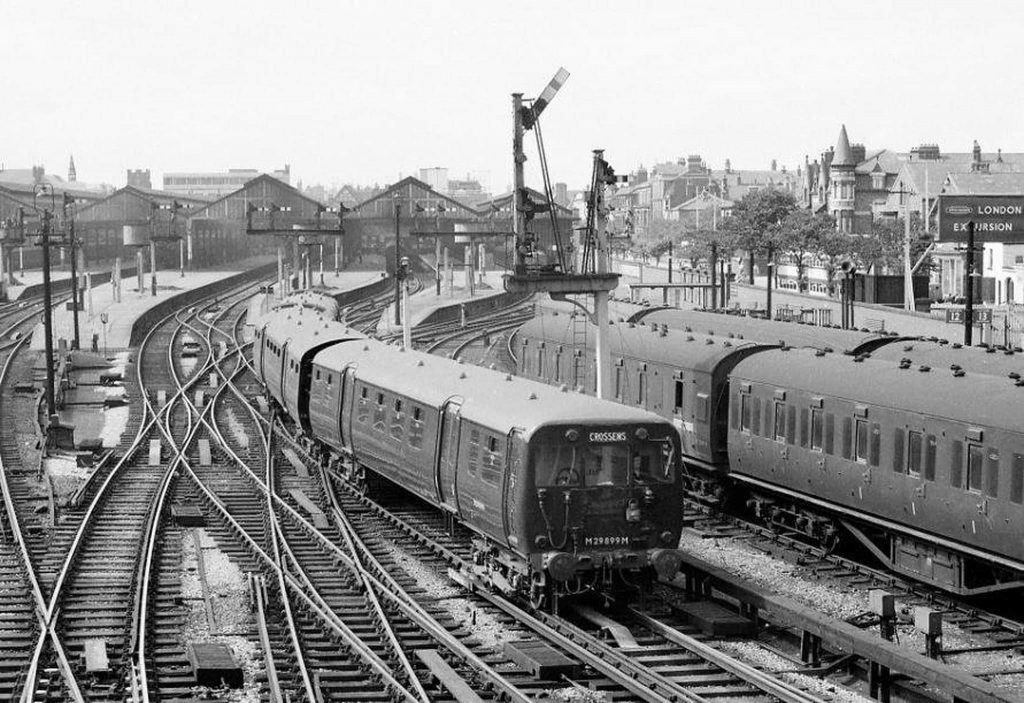
The line as far as Crossens was also used by Electric Multiple Units (EMUs) which provided an intensive commuter service with some peak services from Crossens reversing out of Chapel Street and continuing to Liverpool Exchange.
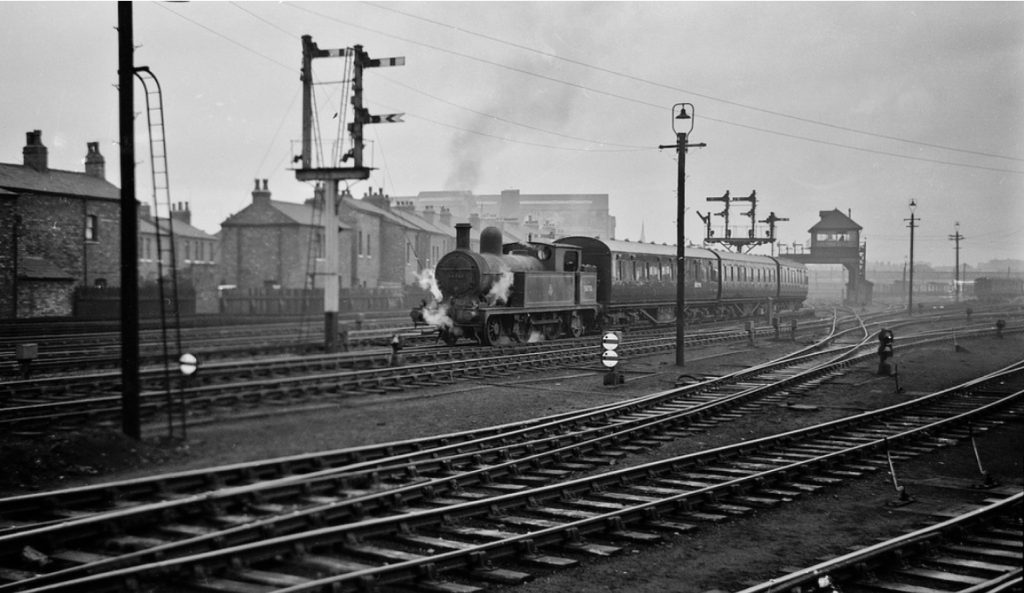
The Station Pilot engine shunting carriages with St Lukes Signal Box stradlling above the rails in the background.
From central Southport, the Preston Line first called at St Lukes where the line to Wigan and Ormskirk split off to the right.
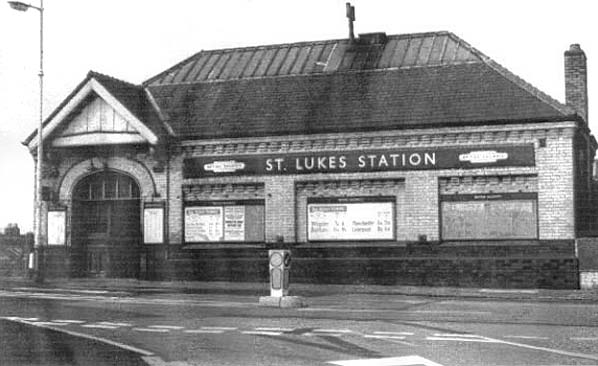
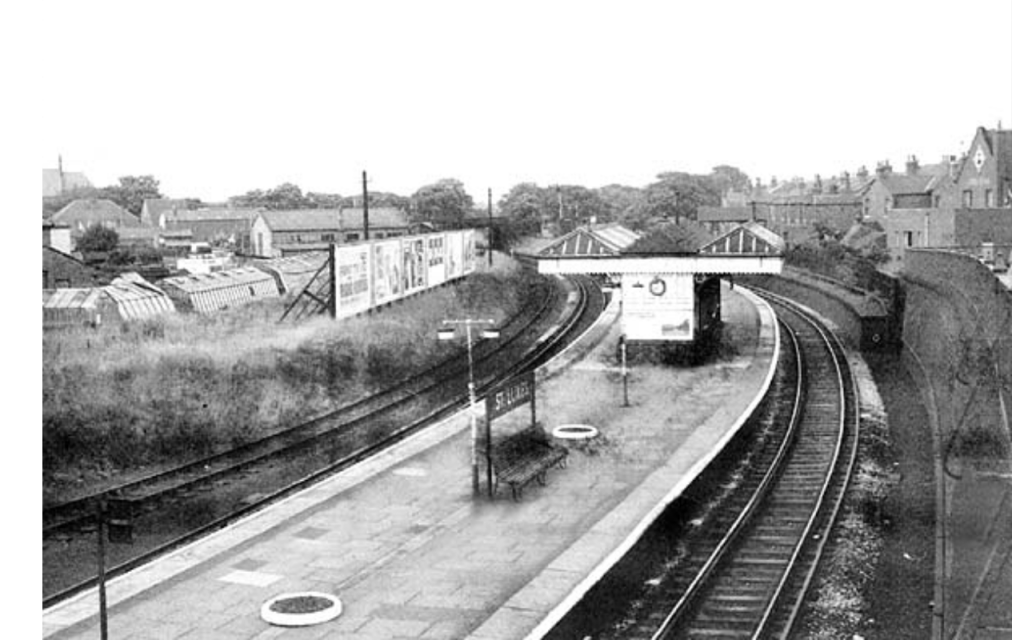
Soon after leaving St Lukes, the line forked with the chord to the right joining the Liverpool Southport and Preston Junction Railway, completed in 1887 at Meols Cop Station; that line continued to rural areas including Halsall, Barton and Altcar eventually joining the Cheshire Lines Committee rails forward to Liverpool.
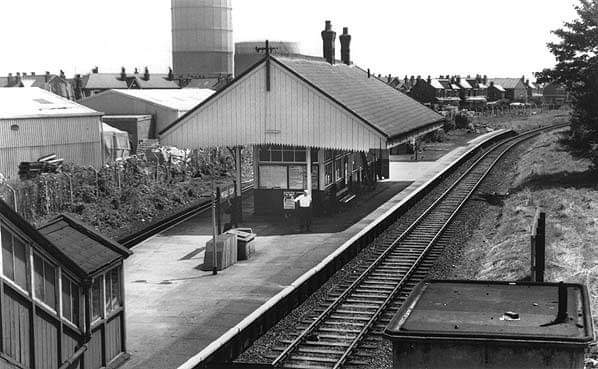
Meols Cop Station viewed from the Bispham Road overbridge
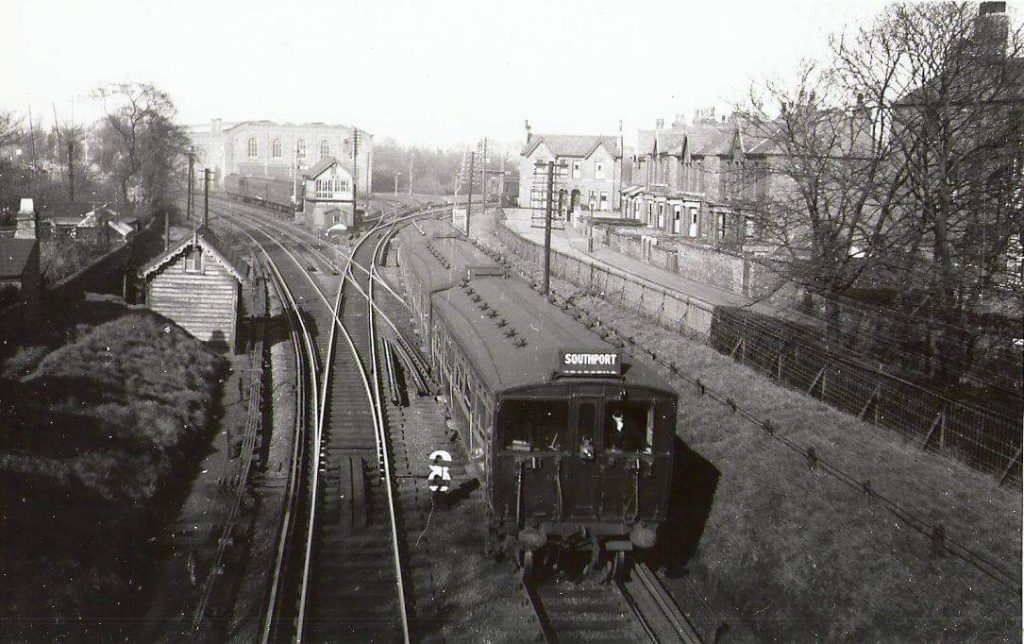
A 1920s Vintage EMU coming off the Meols Cop Chord heading for Southport
Taking the left fork the next station was Hesketh Park which served a growing residential area of high quality residences.
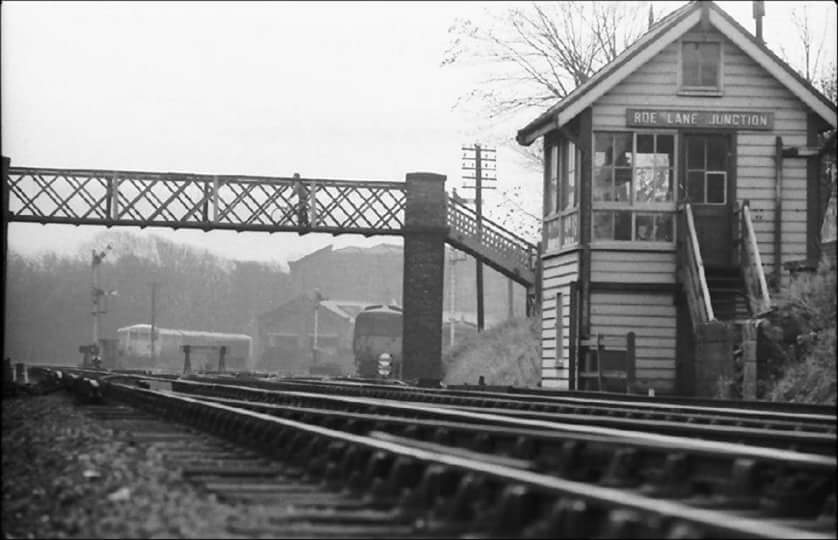
Roe Lane Junction signal box just prior to Roe Lane overbridge and Hesketh Park Station
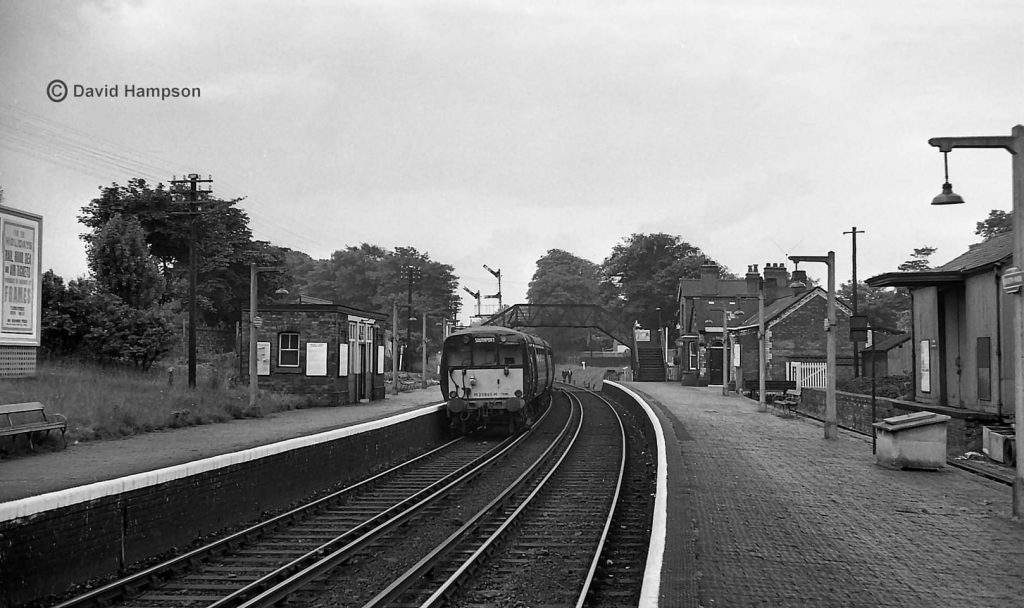
Hesketh Park Station with a local EMU departing for Crossens.
From here the line ran under Hesketh Drive Road Bridge then started the ascent on an earth embankment to Churchtown Station with the platforms perched high above Cambridge Road.
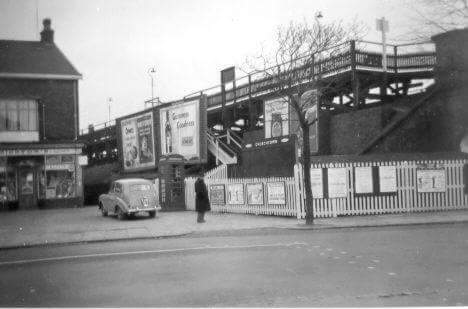
Churchtown Station
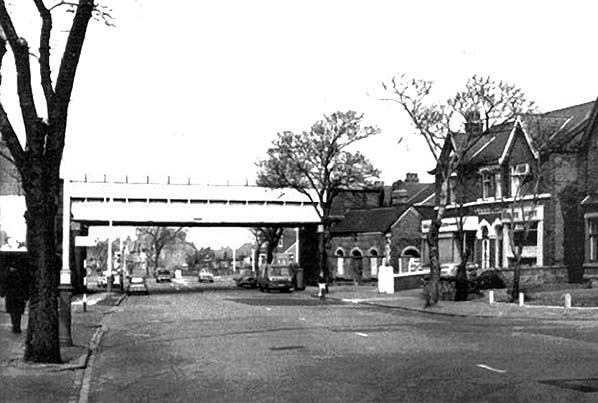
The rail bridge over Cambridge Road with the Station booking office on the right.
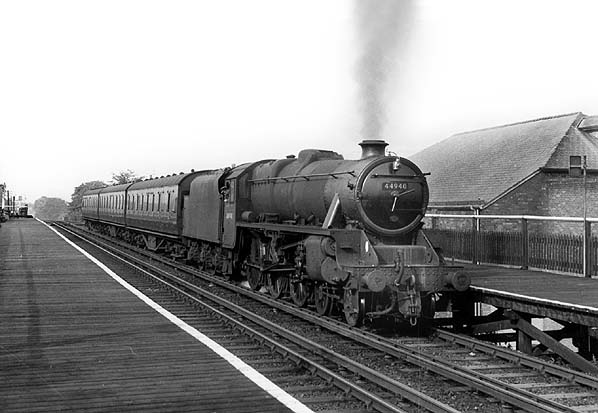
A Preston Bound (down) train waiting at Churchtown Station with the Regent Cinema in the background.
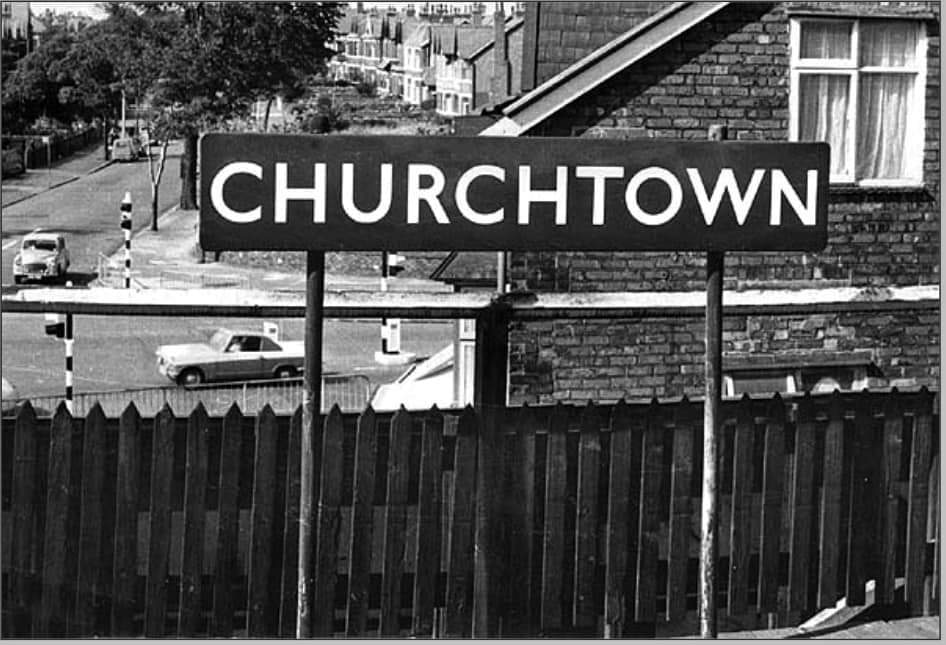
Looking down onto Preston New Road from the down station platform.
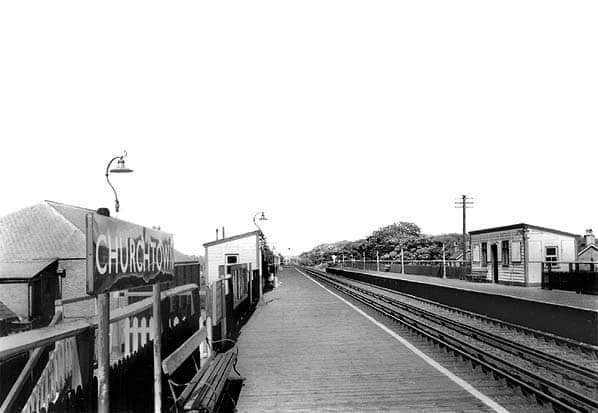
No facilities other than basic shelters were provided at the platforms.
From here the line dropped on an earthen bank at a 1/100 gradient to arrive at the last station within Southport – Crossens. The commuter electric trains also stopped here, reversing and returning to Southport.
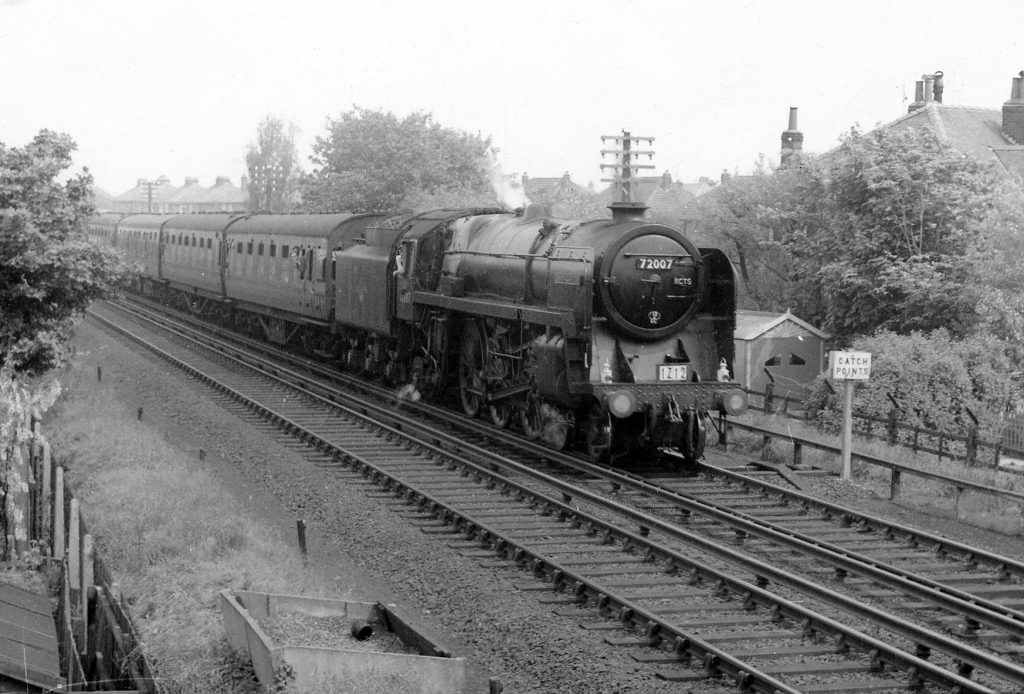
An RCTS excursion passing the Catch Points at Verulam Road between Crossens and Churchtown on the Up road to Southport.
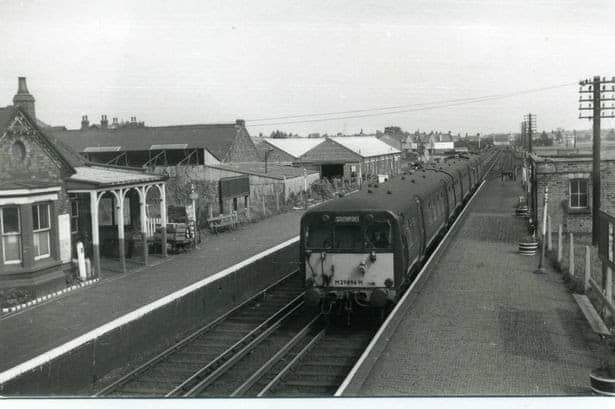
A EMU at Crossens waits to depart for Southport
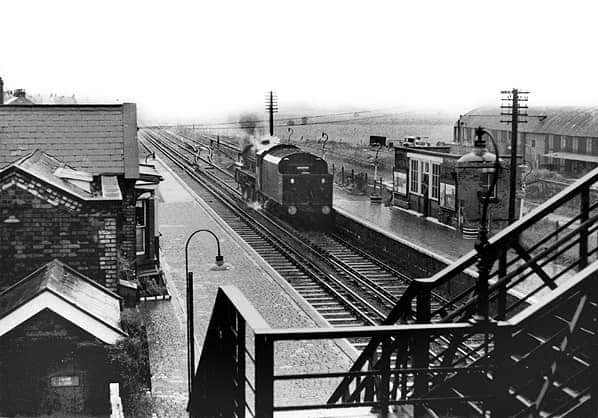
A ‘Light’ engine makes it’s way to Southport through Crossens Station.
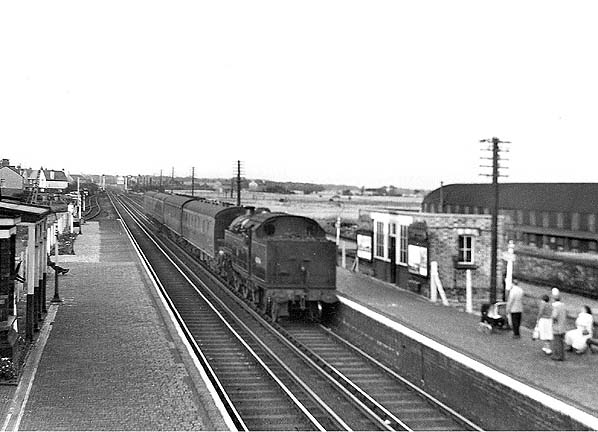
A Blackburn Southport train arriving at Crossens.
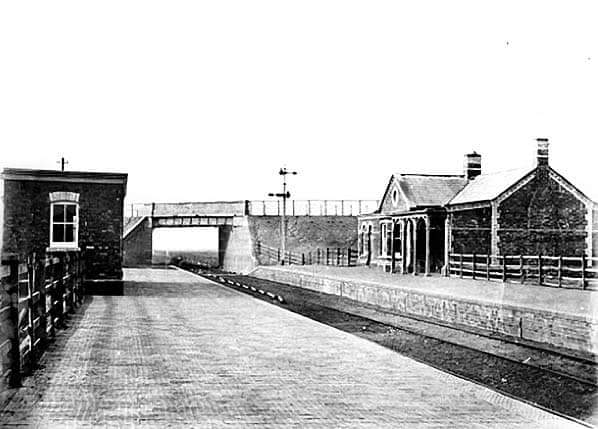
Crossens Station looking pristine prior to the original opening.
The carriage maintenance sheds for the West Lancashire Railway were located behind Crossens Station; it had been deemed that land was too expensive nearer to Southport for these facilities. These were later to be used by The Bankfield Engineering Company.
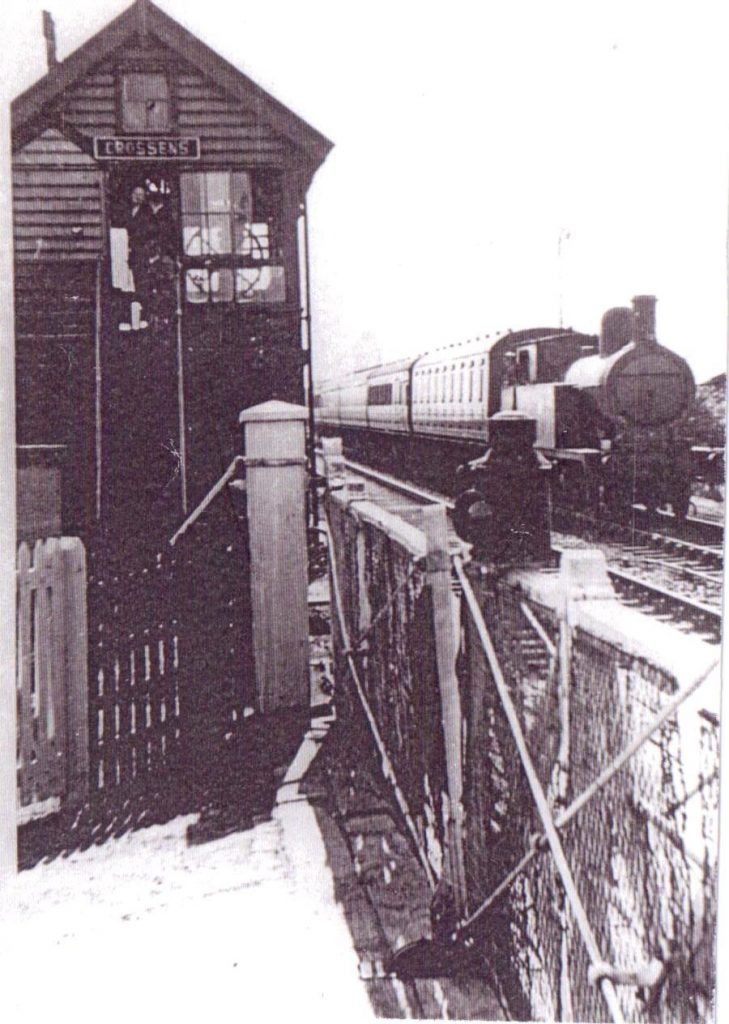
A few hundred yards past Crossens Station, the line left the control area of Southport Council and the first of many Level Crossings appeared, here at New Lane.
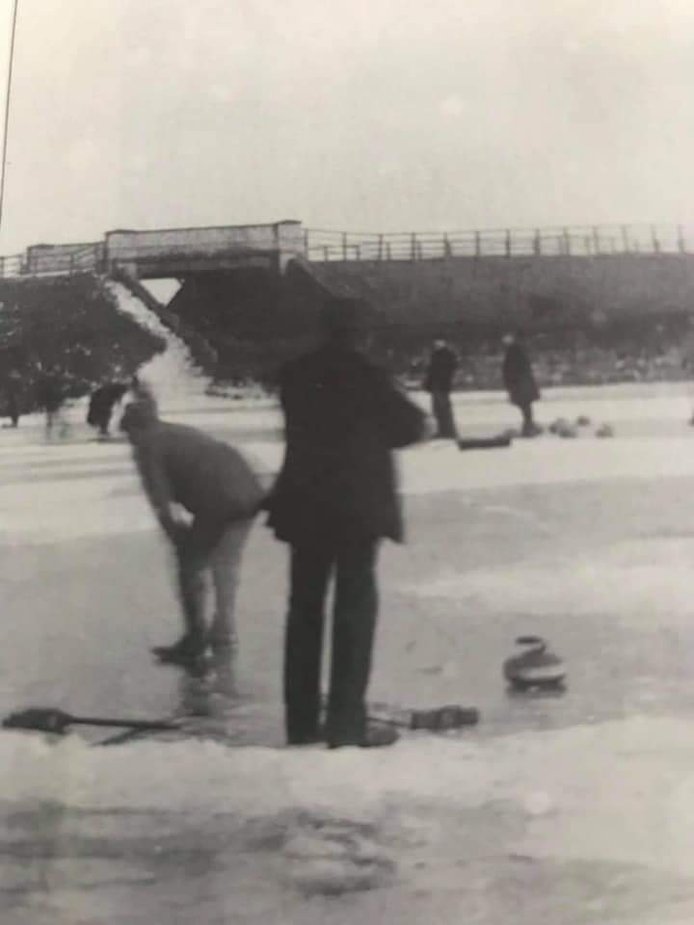
The original A565 road overbridge at Banks; the adjacent frozen pond used for Curling.
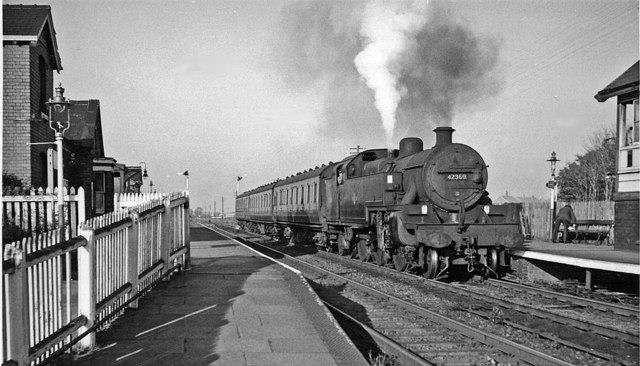
A Southport bound train waits at Banks prior to passing over Hoole Lane level Crossing.
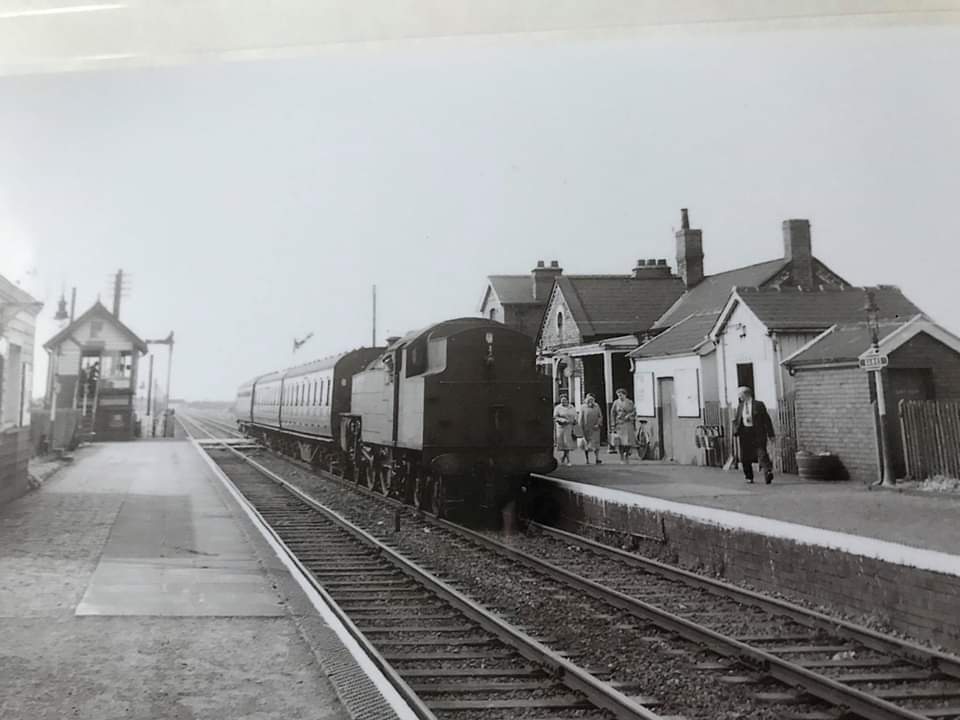
A Preston bound train at Banks.
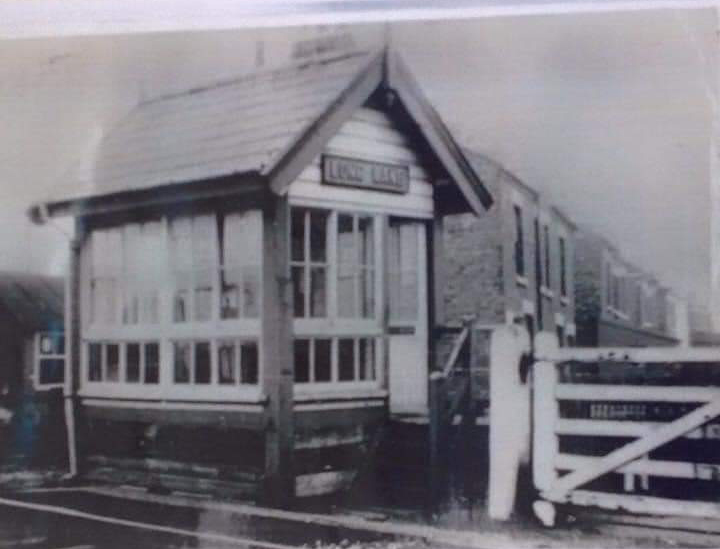
Another Level Crossing at Long Lane Banks; there were another six such crossings on the line before reaching Preston.
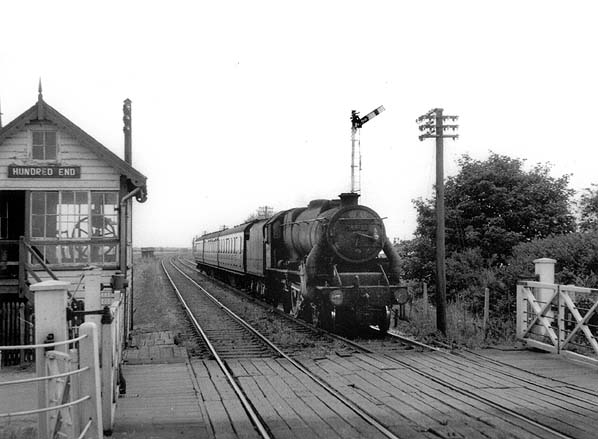
A Southport bound train approaching the level crossing over Hundred End Lane adjacent to the station. The strange arrangement here had the Signal Box and Booking Office on one side of the road in Hesketh Bank with the platforms on the other side in Banks.
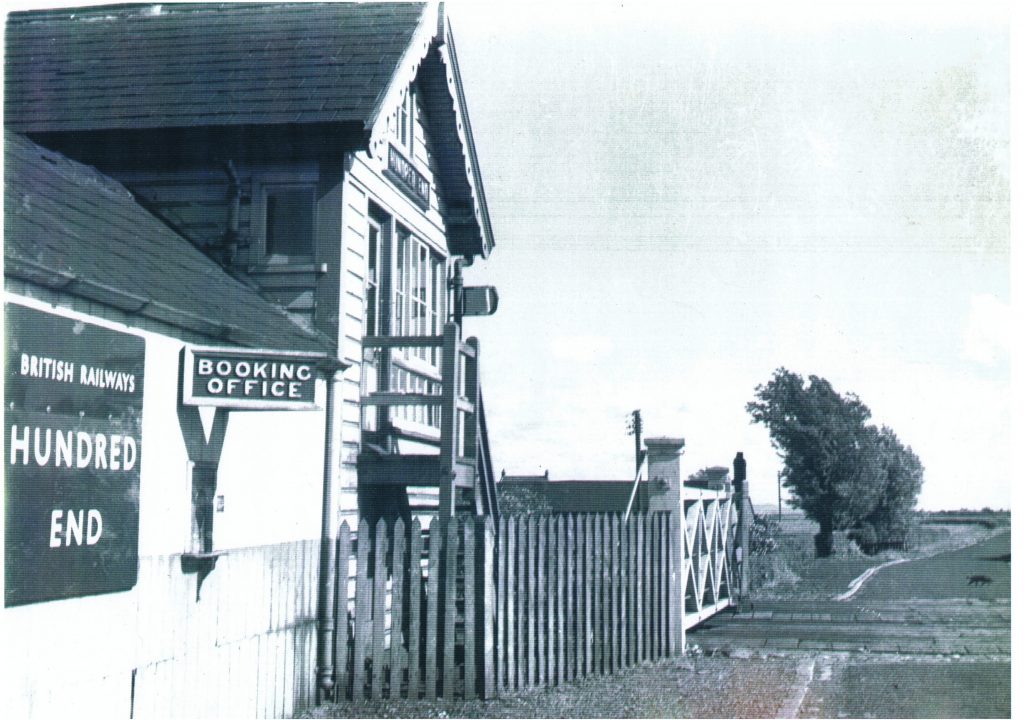
The ‘Booking Office’ was a simple window in a building attached to the Signal Box offering no protection to commuters from the weather.
The line now curved to the East following the Southern boundary of the Hesketh Estate to Hesketh Bank Station; one of the busiest of these rural stations. An Express train from here at 9:09 arrived in Preston just 14 minutes later! The 8:59 Express to Southport made the trip to Churchtown in the Southport suburbs in just 8 minutes!
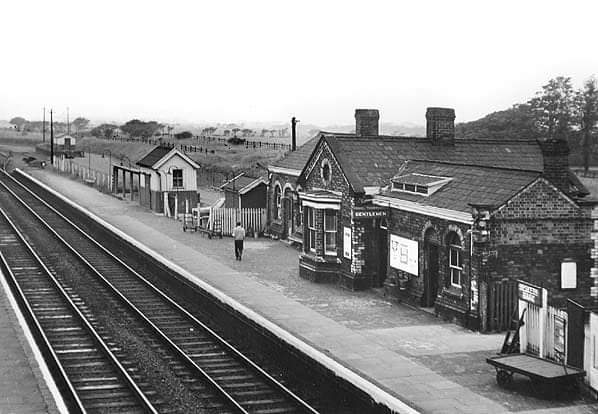
Hesketh Bank Station looking towards Southport with the goods sidings behind.
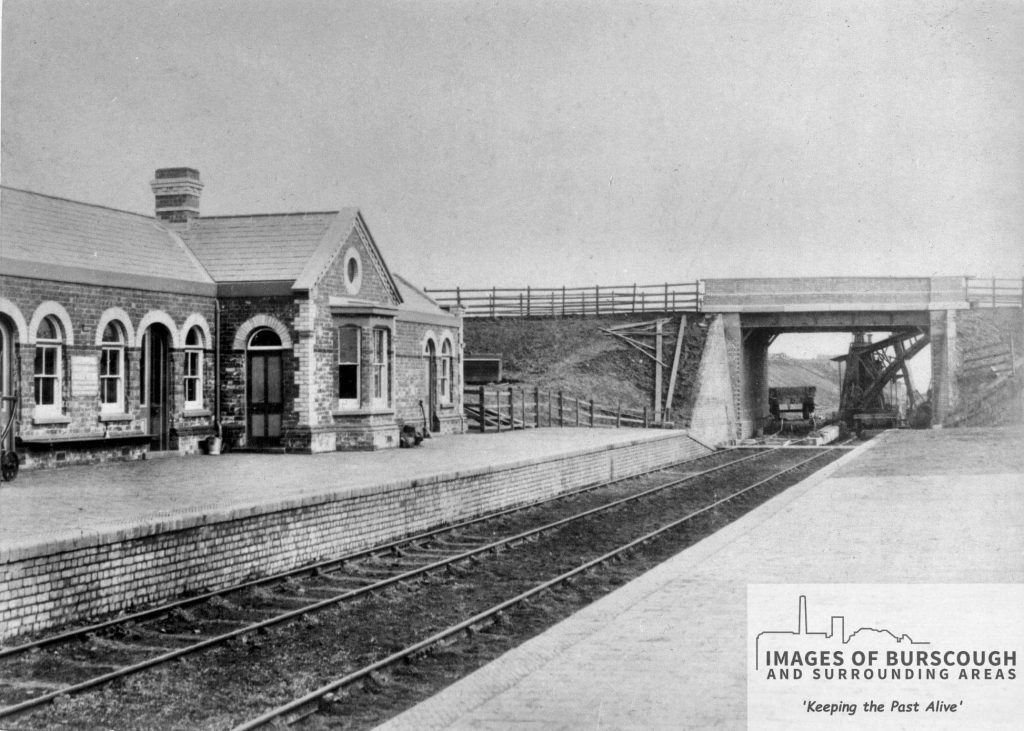
Still under construction with the ‘Steam Navvy’ brought in to deal with the heavy clay beyond the road bridge.
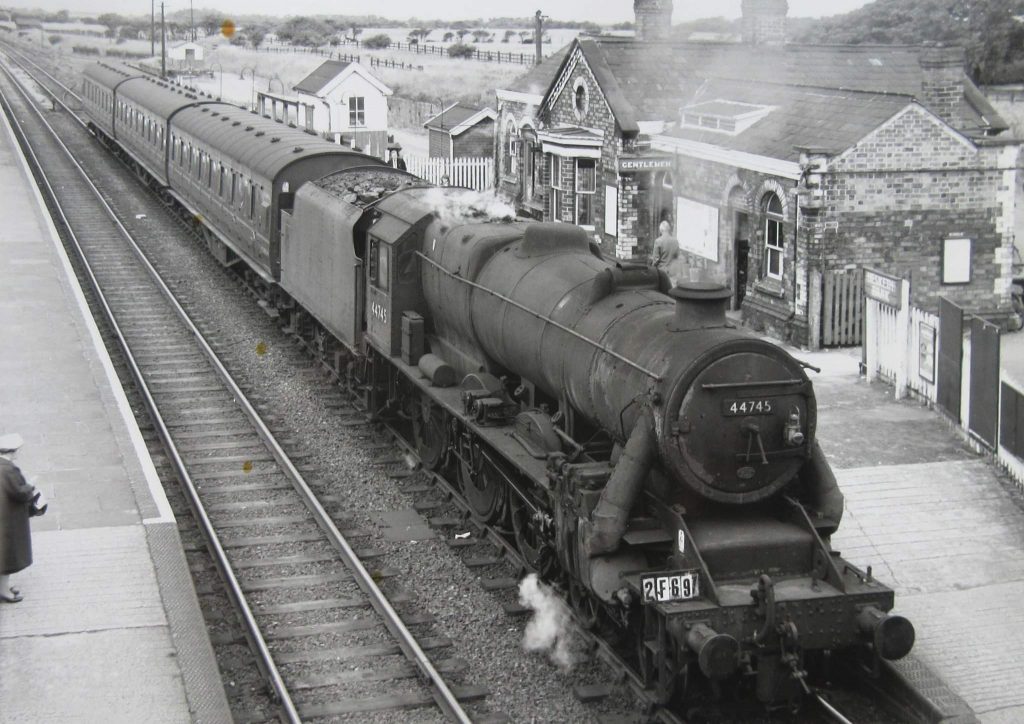
A Preston Bound train at Hesketh Bank Station.
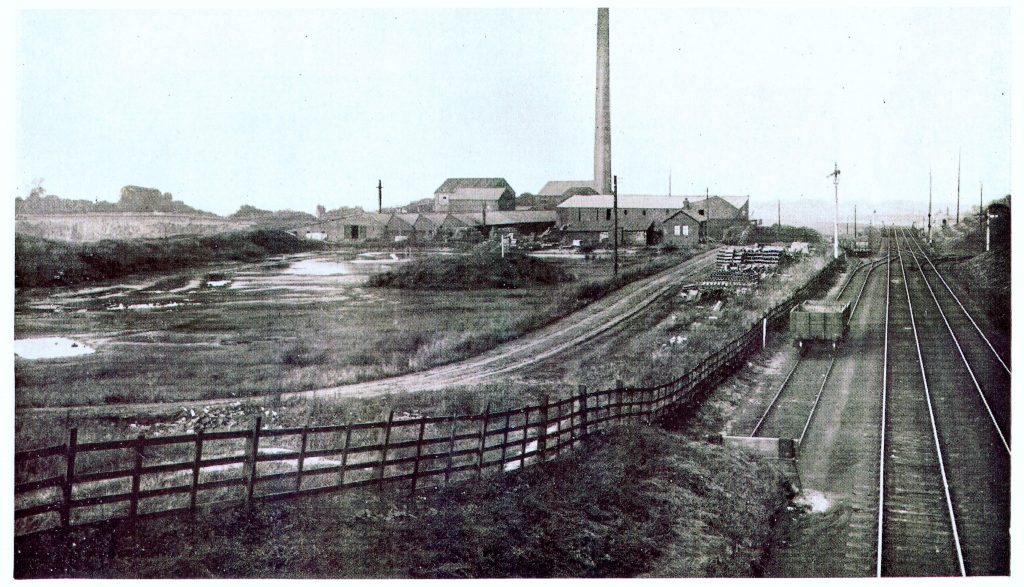
A view from Station Road bridge towards Preston showing the former Alty Brickworks and sidings. To the top right can be seen the Tarleton Branch railway, now the ‘Henry Alty Way’.
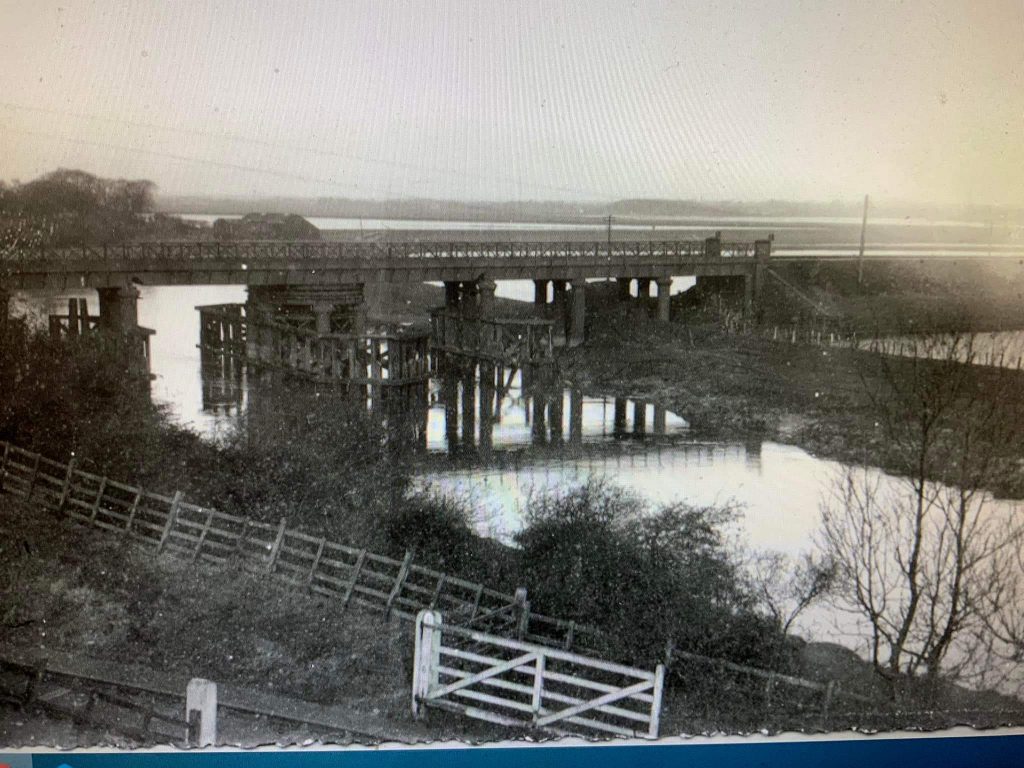
A view of the Douglas rail bridge with the Tarleton branch line in the foreground. This view is taken from what is now Brick Kiln Lane.
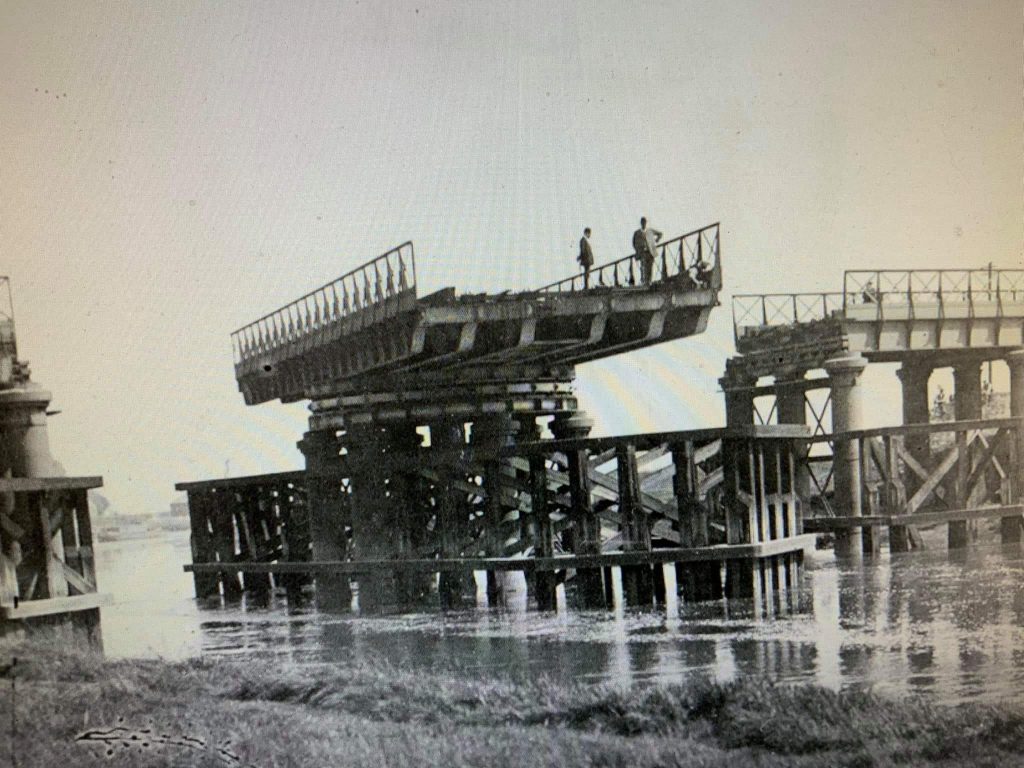
Bridge inspection prior to the opening to traffic.
The bridge had a central opening section, which was operated through a one man capstan located in the centre, allowing masted vessels to pass. In reality this river traffic was already in decline and the last opening was recorded in 1899 after which it was welded shut. An expensive piece of engineering for just seventeen years use !
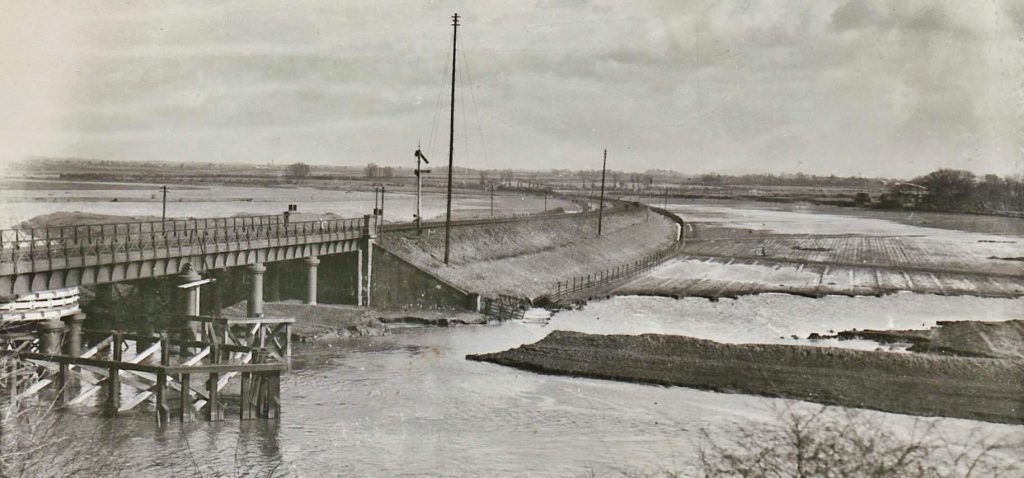
Over the river and onto Hoole Marshes prior to the river defences were built.
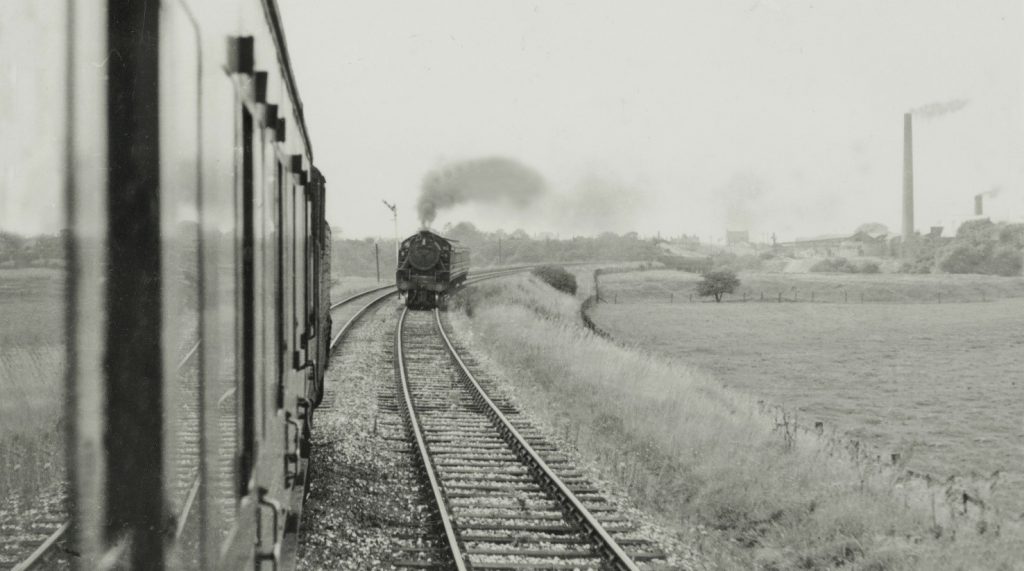
Aboard a Southport train approaching the Douglas Bridge with a Preston Bound train on the down line and Alty’s Brickworks in the background.
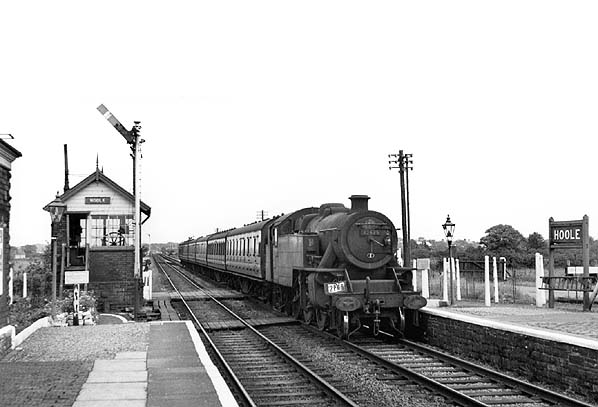
A Southport bound train arriving at Hoole Station.
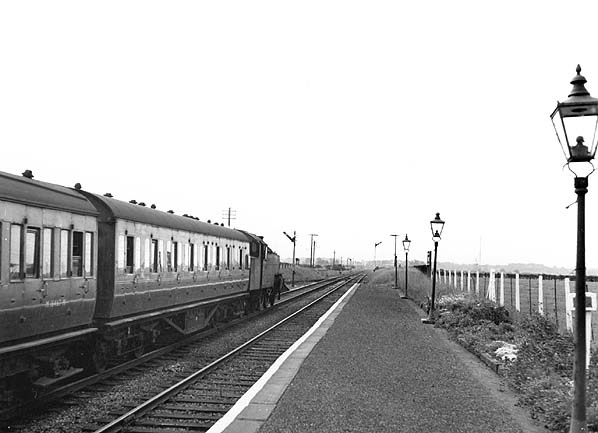
Southport bound again at Hoole; to the end, the station only had oil filled lighting.
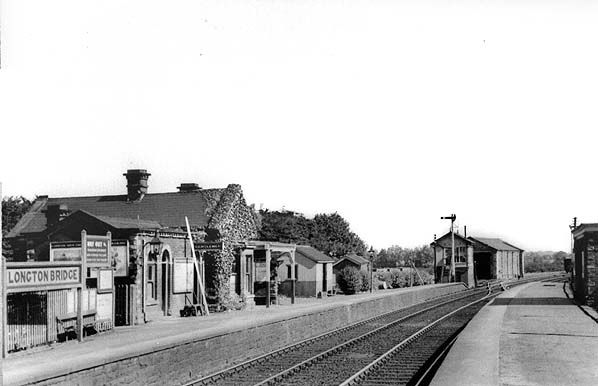
Longton Bridge Station situated on the embankment adjacent to Liverpool Road looking towards Preston.
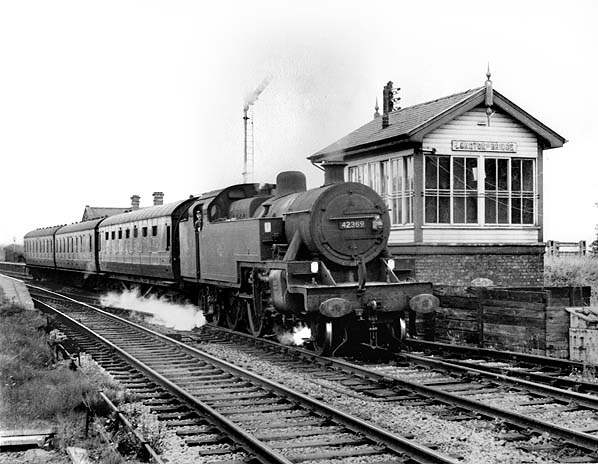
A Preston bound train leaving Longton Bridge
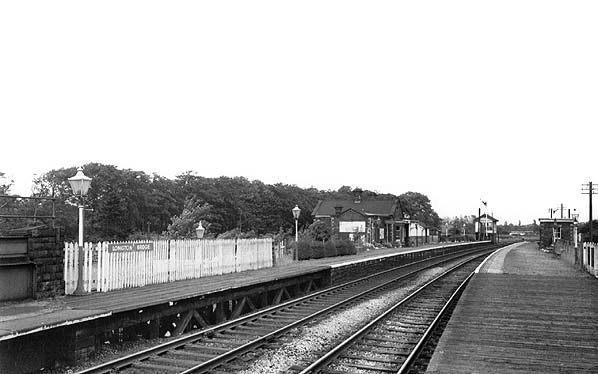
The unusual arrangement of the platforms extending onto the bridge over Liverpool Road.
From Longton Bridge, the line went east across mainly agricultural land again. The Longton Road Bypass built in the early 60’s had to incorporate a large bridge over the track with considerable earthworks, which was a significant element of the cost. In the event it became redundant within a couple of years.
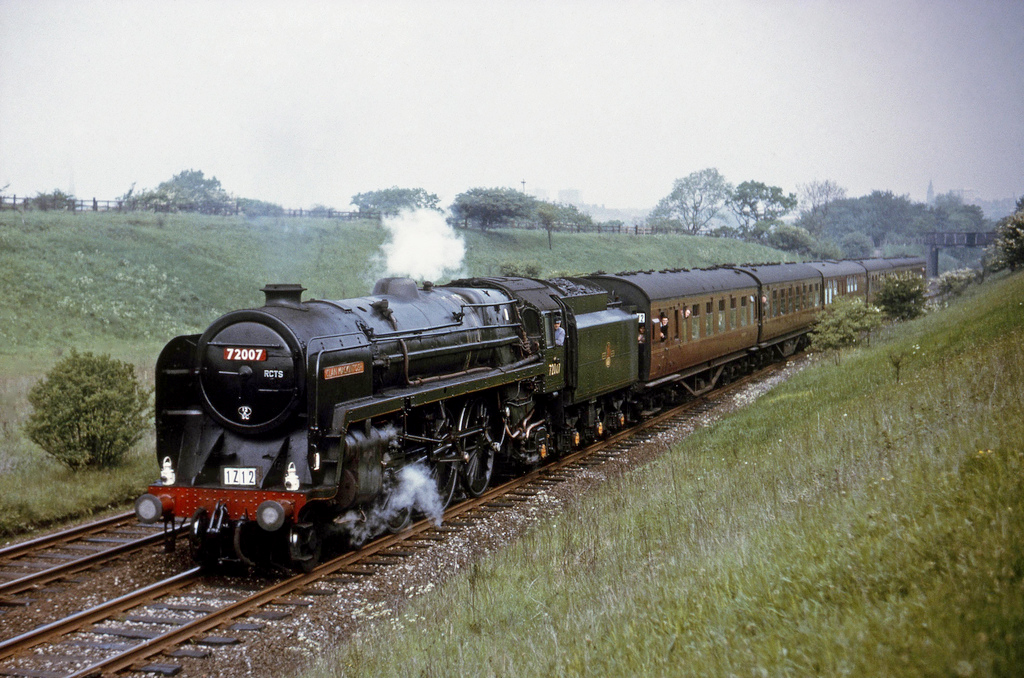
The RCTS excursion train hauled by ‘Clan Mackintosh‘, which we saw earlier approaching Churchtown, now pictured approaching the Longton Bypass bridge having just passed under Moss Lane bridge.
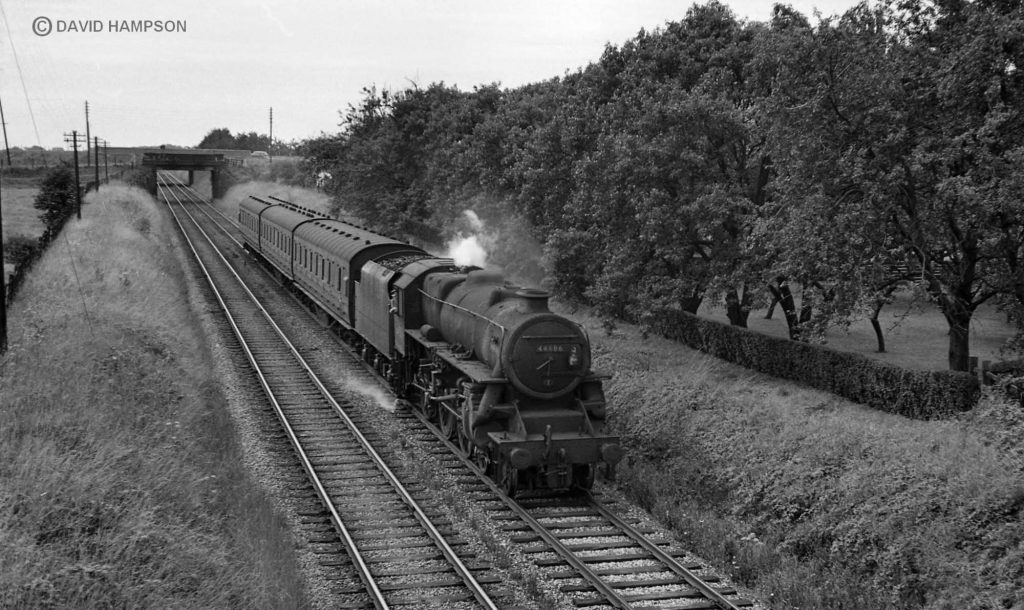
A Preston bound train approaching ‘Nursery Crossing’ having just past under Moss Lane overbridge with the Longton Bypass in the background
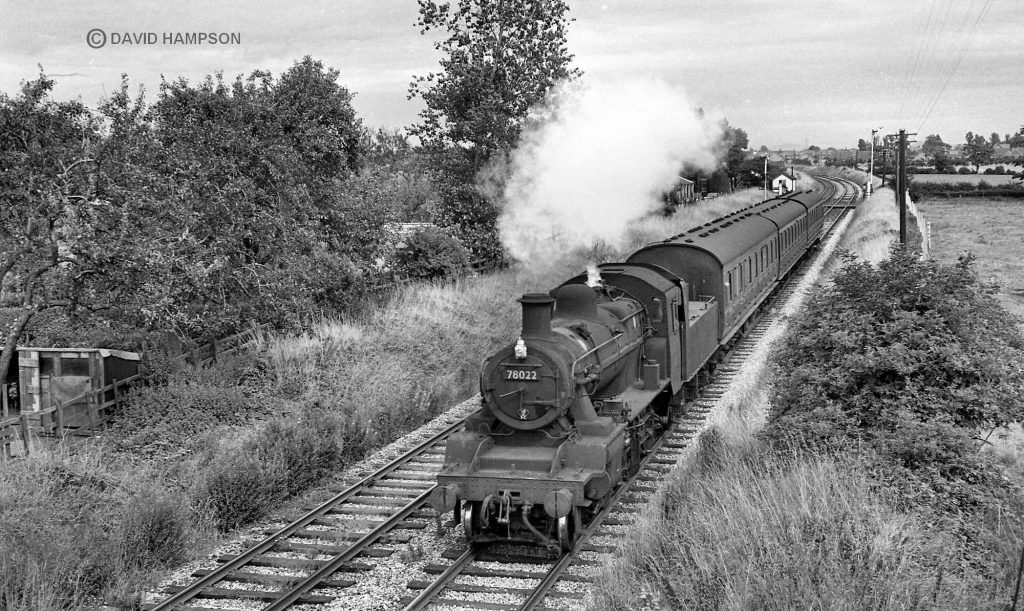
A Southport bound train at the same location with ‘Nursery Crossing’ in the background.
The next Station was New Longton & Hutton previously known as ‘Howick’ or ‘Hutton and Howick’.
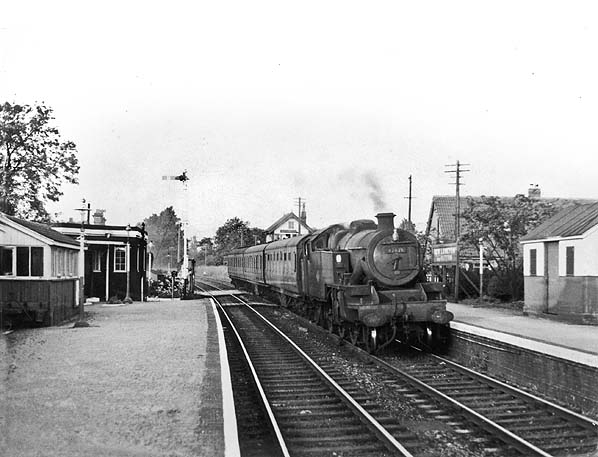
A Southport bound train arriving at New Longton.
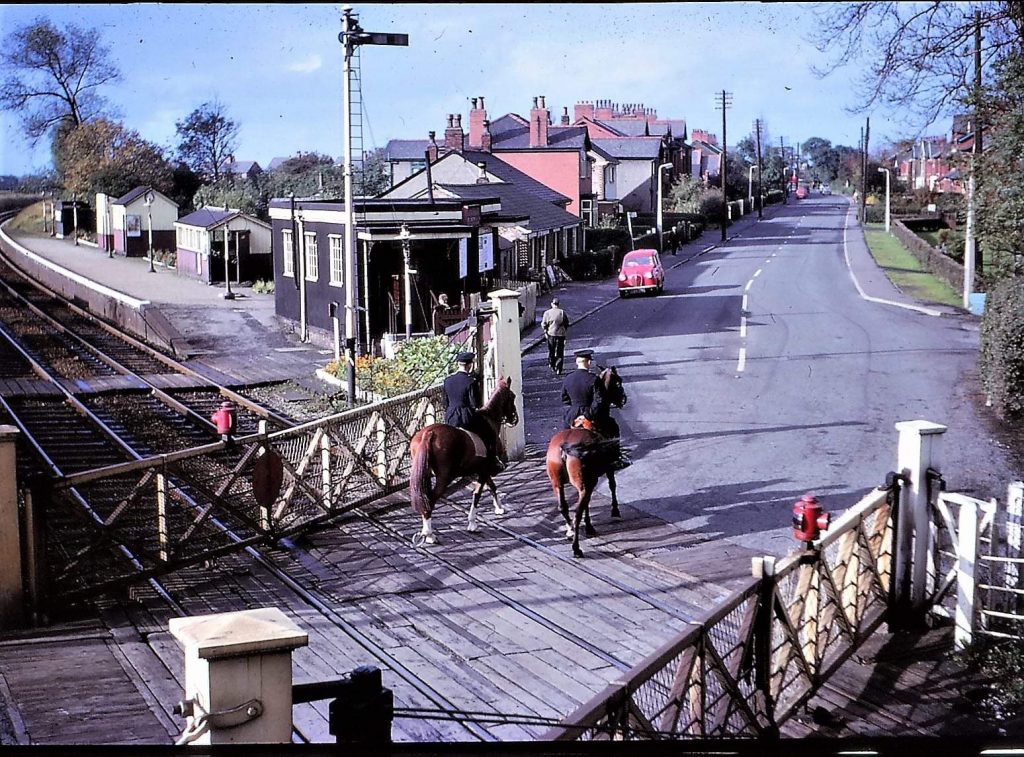
New Longton Station – Southport to the left.
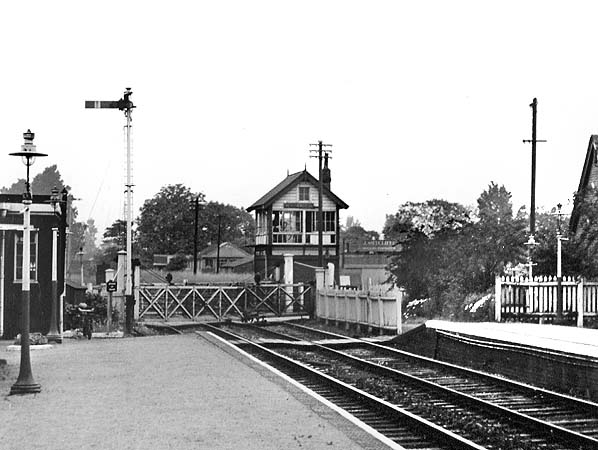
New Longton and Hutton Station looking towards Preston with the Signal box on the far side of Station Road.
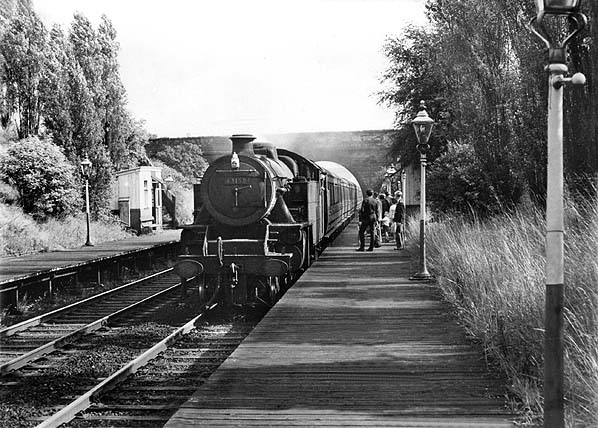
Penwortham (Cop Lane) with it’s antiquated wooden platforms, minimalistic shelters and oil lamps.
From Penwortham, the original West Lancashire line crossed the River Ribble Ribble over a large curving viaduct into a Station located on Fishergate Hill.
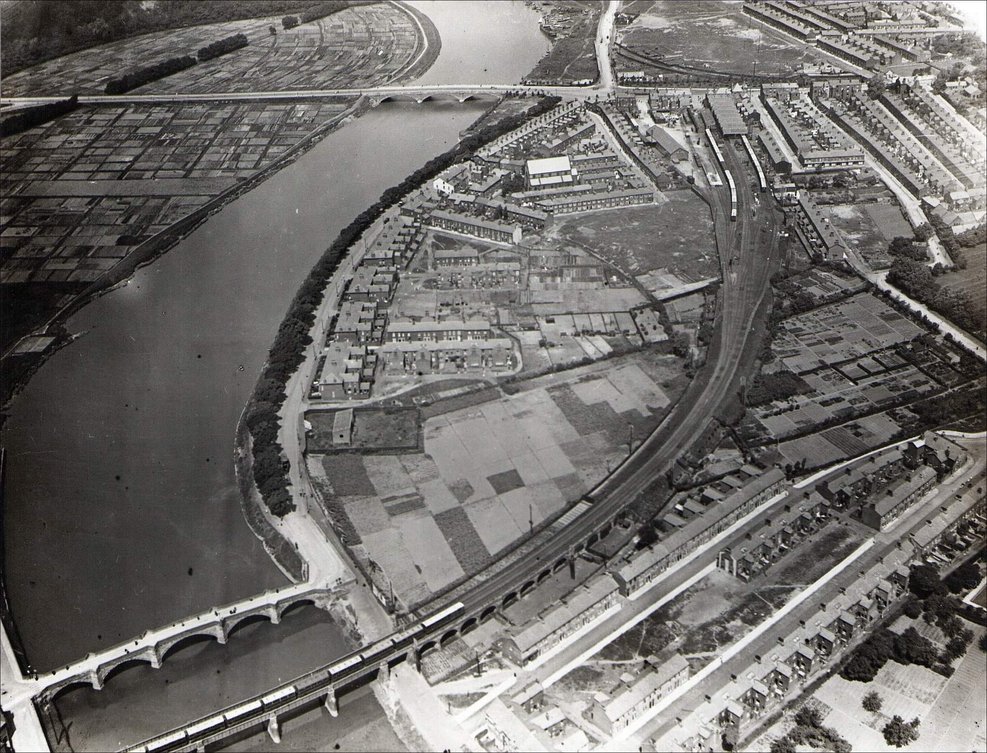
West Lancs Railway Ribble Viaduct sweeping into the Fishergate Hill Station.
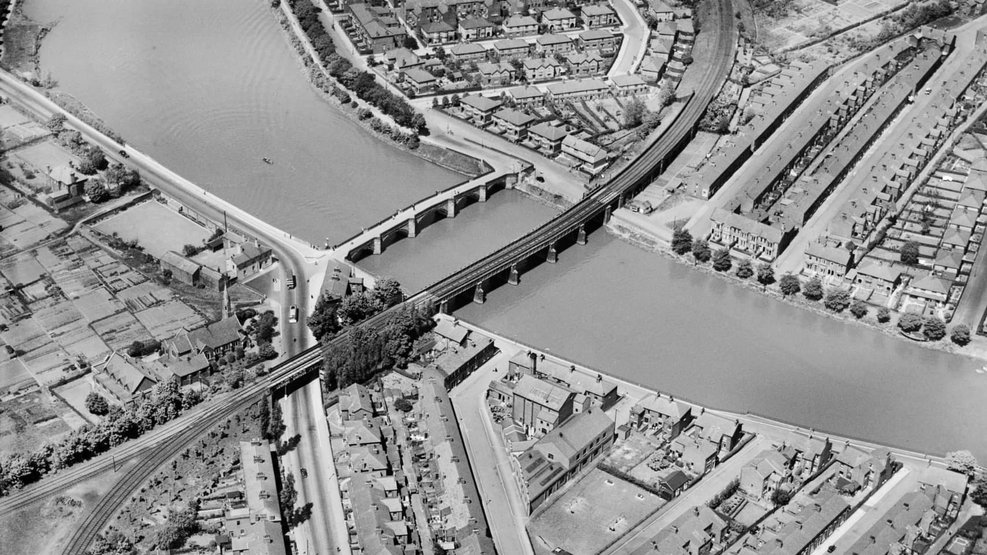
Another view of the viaduct with a portion of the Middleforth triangular junction at the bottom left.
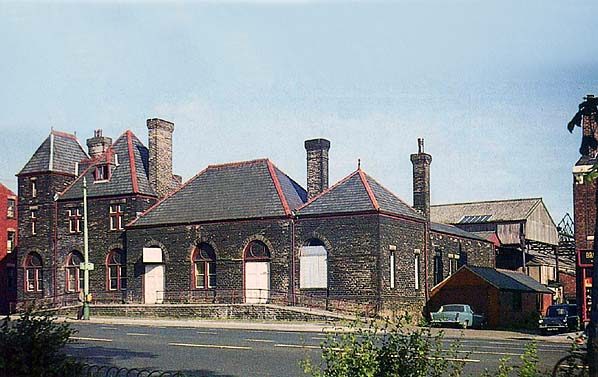
The original West Lancs terminus with the train shed behind re-purposed in the 1970s
Following the acquisition of the line by the Lancashire and Yorkshire Railway (L&YR) in 1897, the decision was taken to divert all passenger traffic into the L&YR existing station and to enable this a new chord was built at Whitehouse Junction giving a West to North connection.
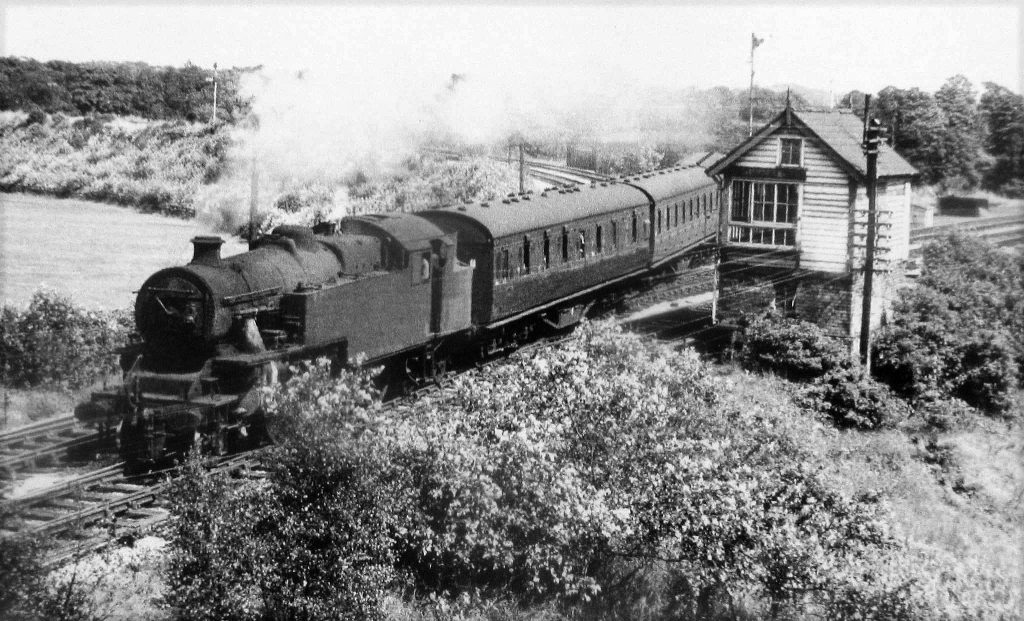
A Southport train coming off the West Junction of the Whitehouse Triangle. The line to the right being the connection to Blackburn.
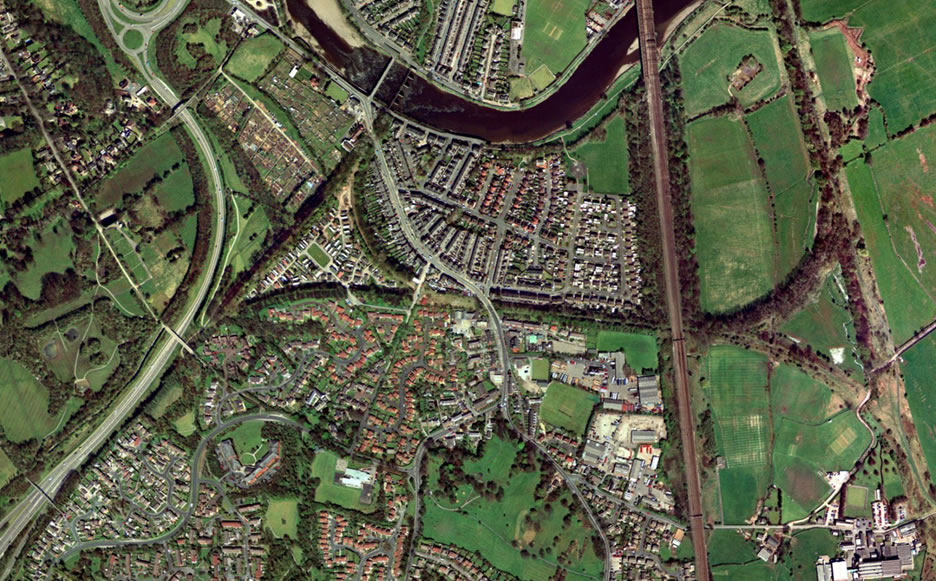
Both the Middleforth and Whitehouse delta junctions still clearly visible on a modern ‘Google Earth’ image. The Golden Way (now A59) used the former trackbed for it’s Southern section.
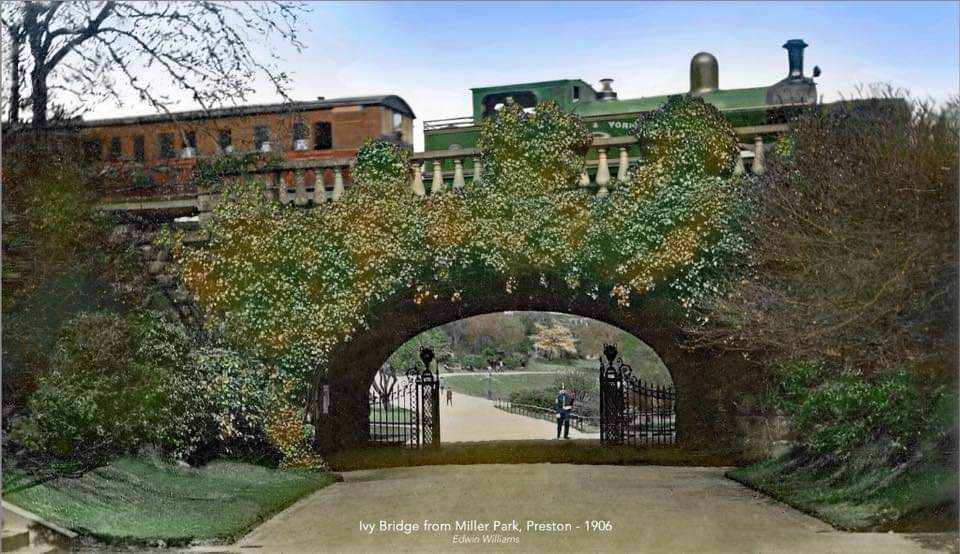
The approach to Preston through Miller Park.
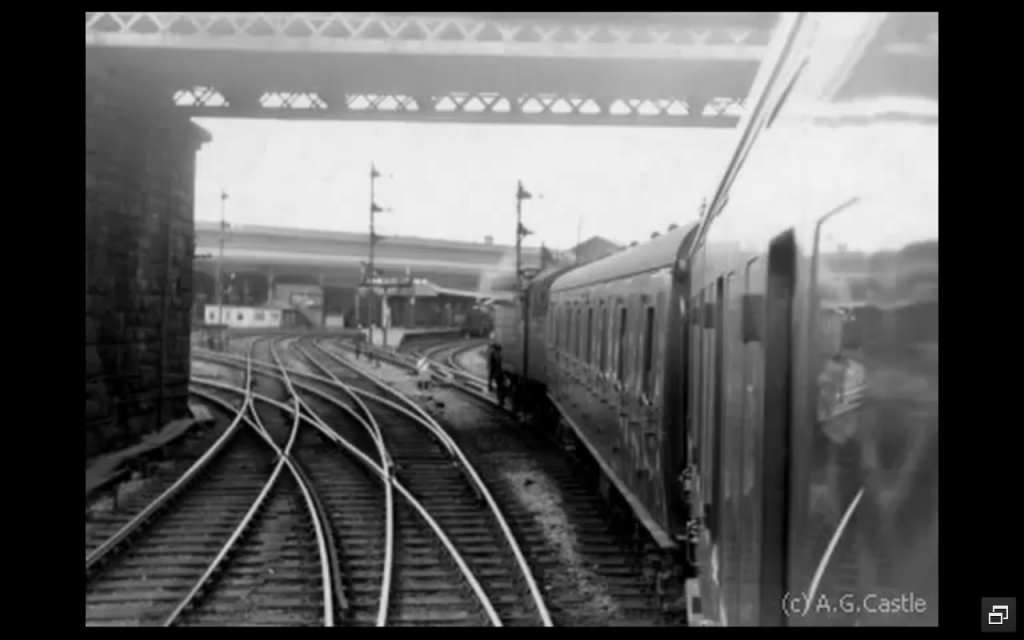
A view from the train as it pulls into Preston (east Lanc) Station under Vicar Bridge.

A view of the Eat Lancs platforms (centre right) where tarins from Southport arrived and departed.
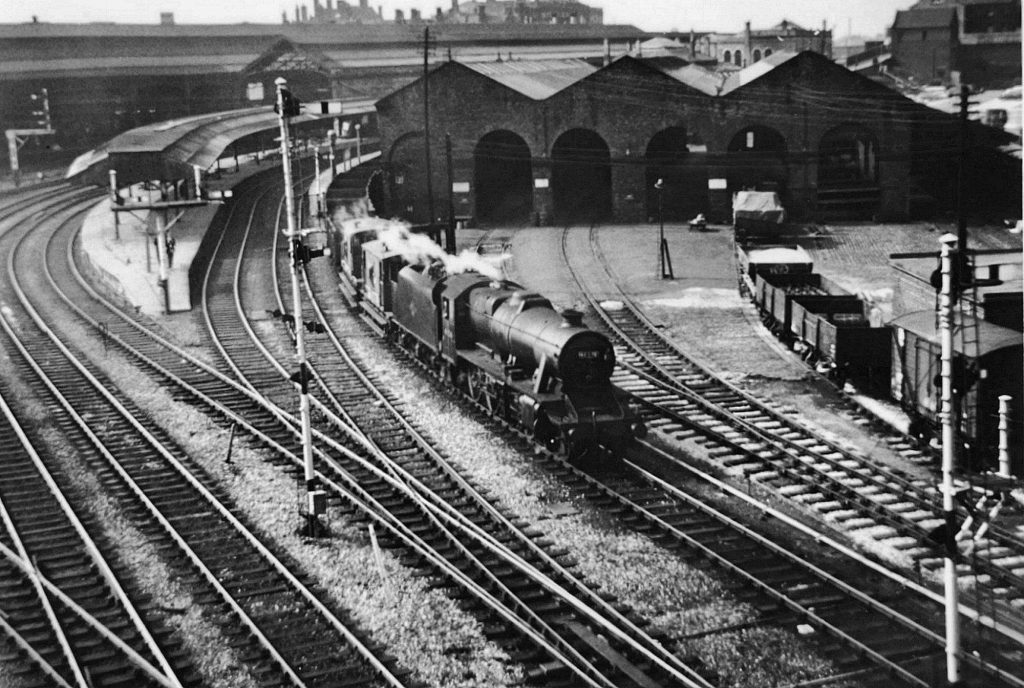
Another view from Vicar Bridge.
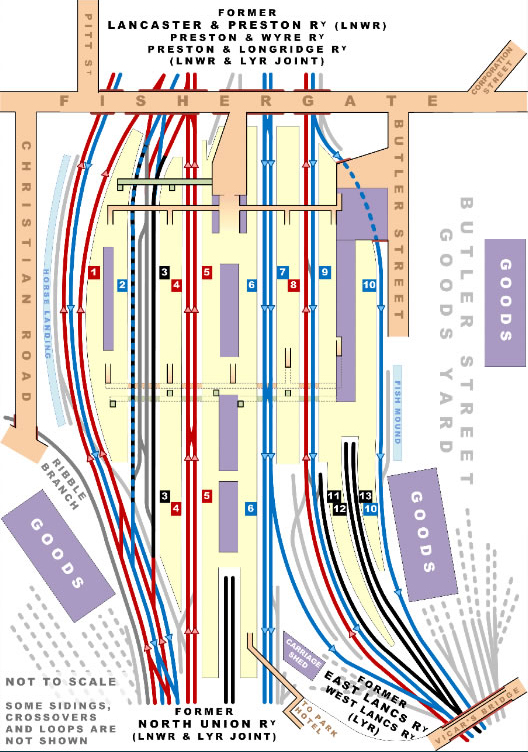
Preston Station Layout prior to closure of the East Lancashire platforms and Goods facilities. Southport trains used platforms 11, 12 and 13. Trains from Southport going and coming from further afield went into platforms 8 and 9 in the main train shed.
The whole line reputably never made a profit although no account was ever taken of the large number of excursion trains than ran to and from the resort. During the Summer months, regular services were provided to Yorkshire, Teeside and Tyneside. Southport was always a popular resort for visitors from Scotland with regular services from Glasgow and beyond in the Summer.
British Rail were minded to close the line from Crossens to Preston as early as 1955 leaving the Electric Commuter service from Crossens to Southport in place. In the event it was the Beeching Report that dealt the final blow in 1964. It was also claimed that the passenger figures used to justify the closure were way off the mark as they were compiled on a wet Tuesday in February and consequently took no account of the Summer traffic along with the numerous and extensive excursions to the town. In addition, the line was also used as a diversionary route from Preston (and the main West Coast Line) to Liverpool by both the L&Y route to Exchange Station and the Cheshire Line Committee (CLC) line via Aintree.
…. and when the last train had gone.
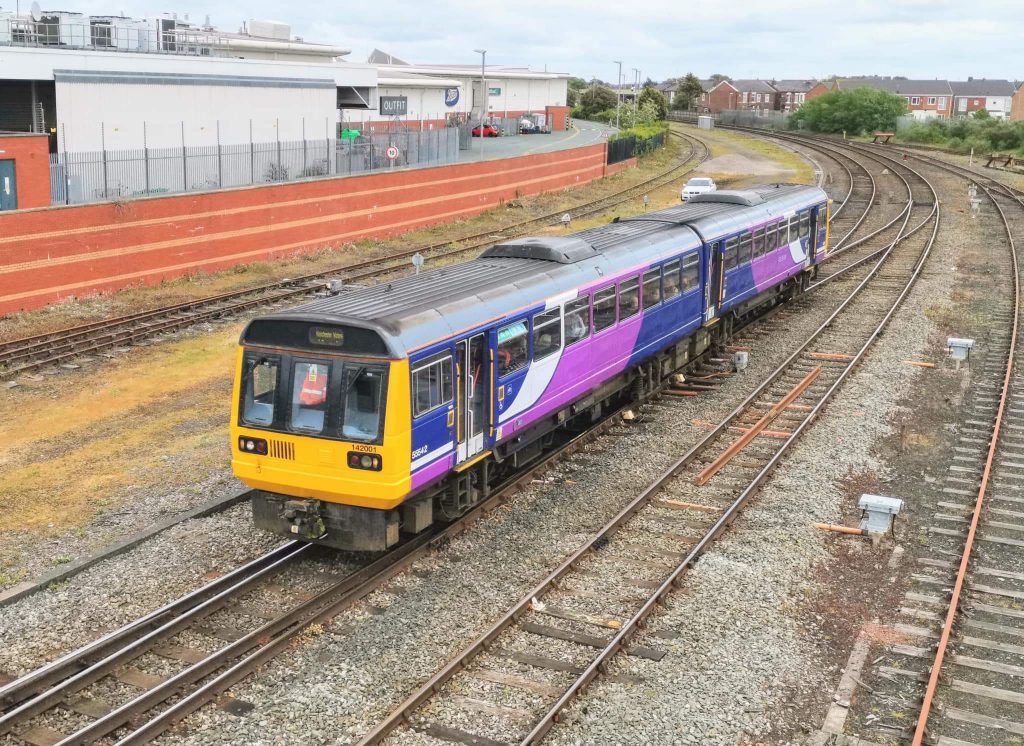
The massive Station Throat reduced to just a pair of running roads. The development on the left now occupying the site of the goods lines, engine sheds and original West Lancs Station. The main Chapel Street Station was also reduced from 13 platforms to just 6.
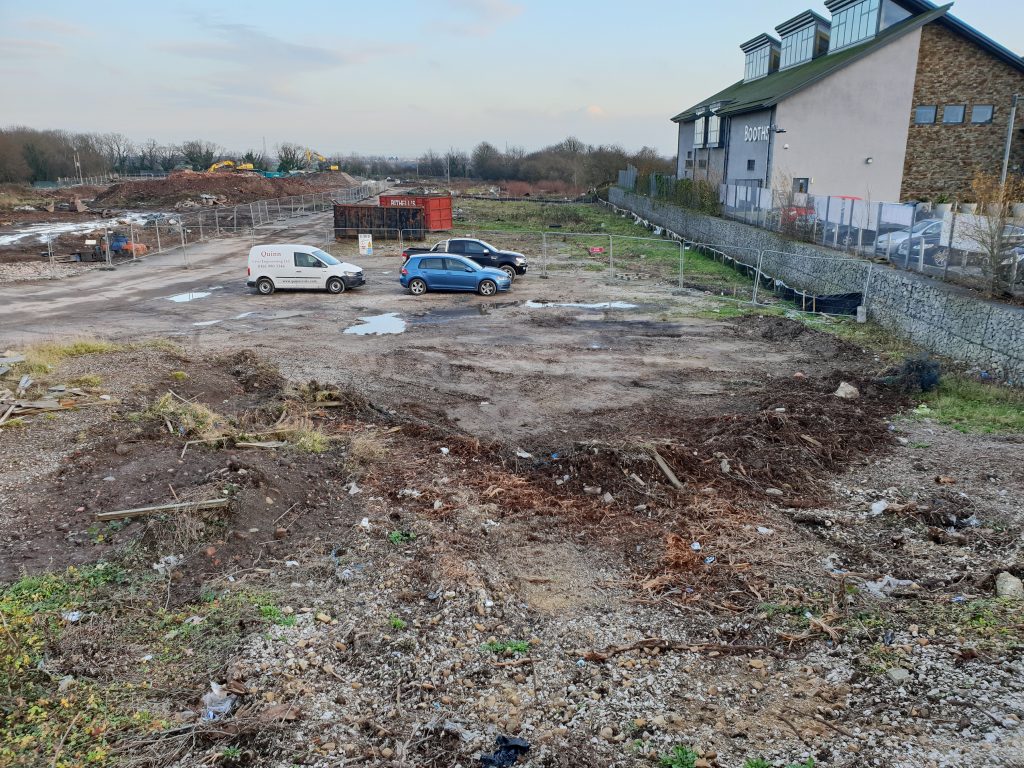
The former trackbed at Hesketh Bank looking towards Preston at the start of the Persimmon residential development.
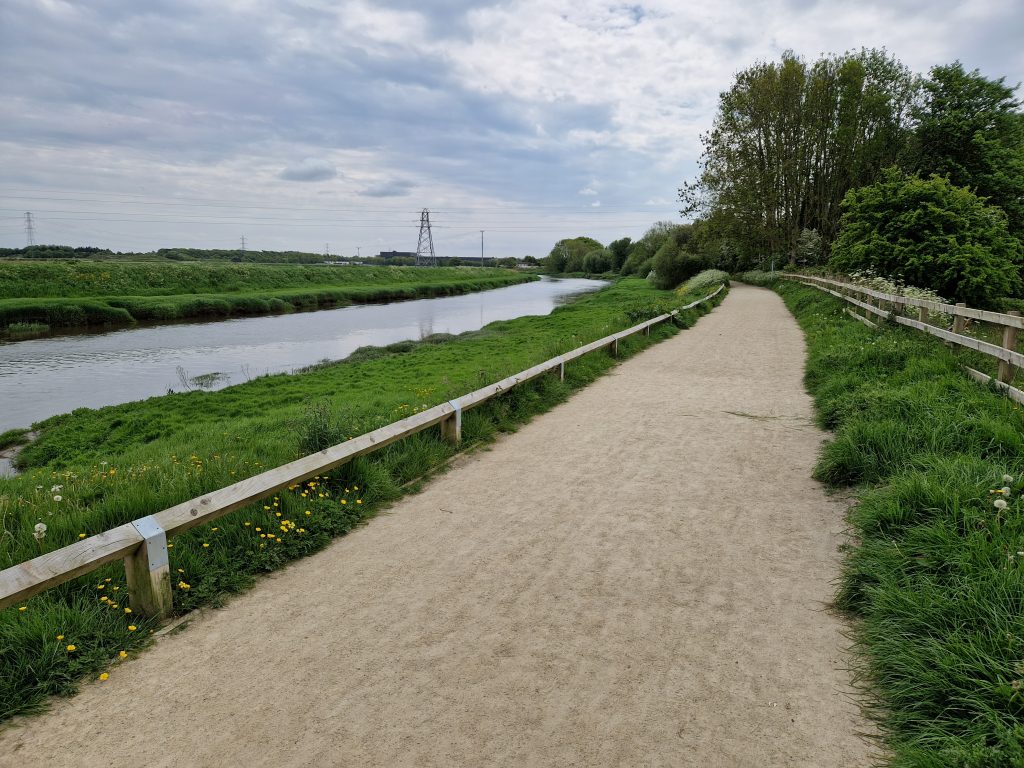
The former trackbed of the Tarleton Branch Line now the Henry Alty Way within the Douglas Linear Parkland.
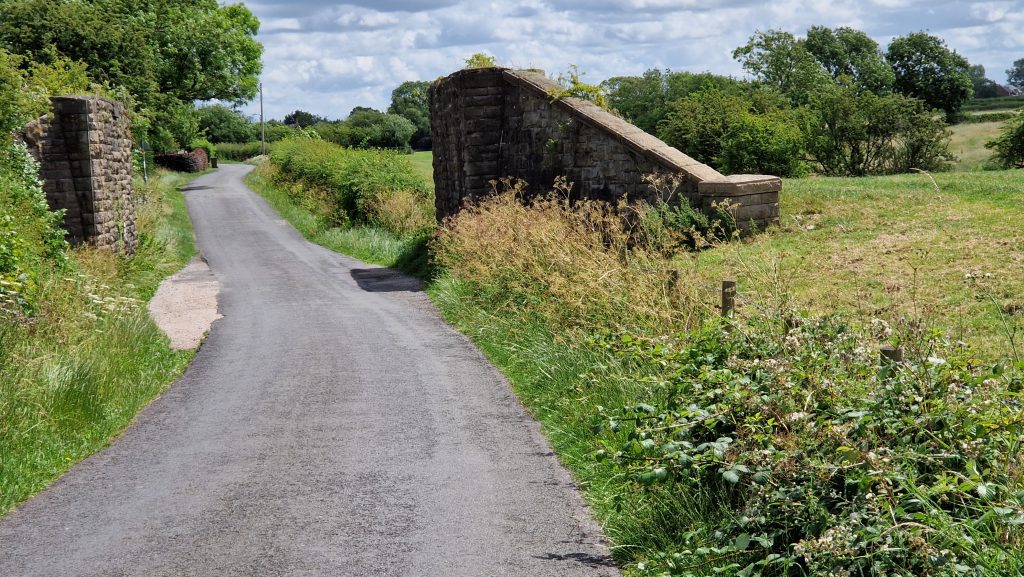
Preserved bridge abutments in Longton.
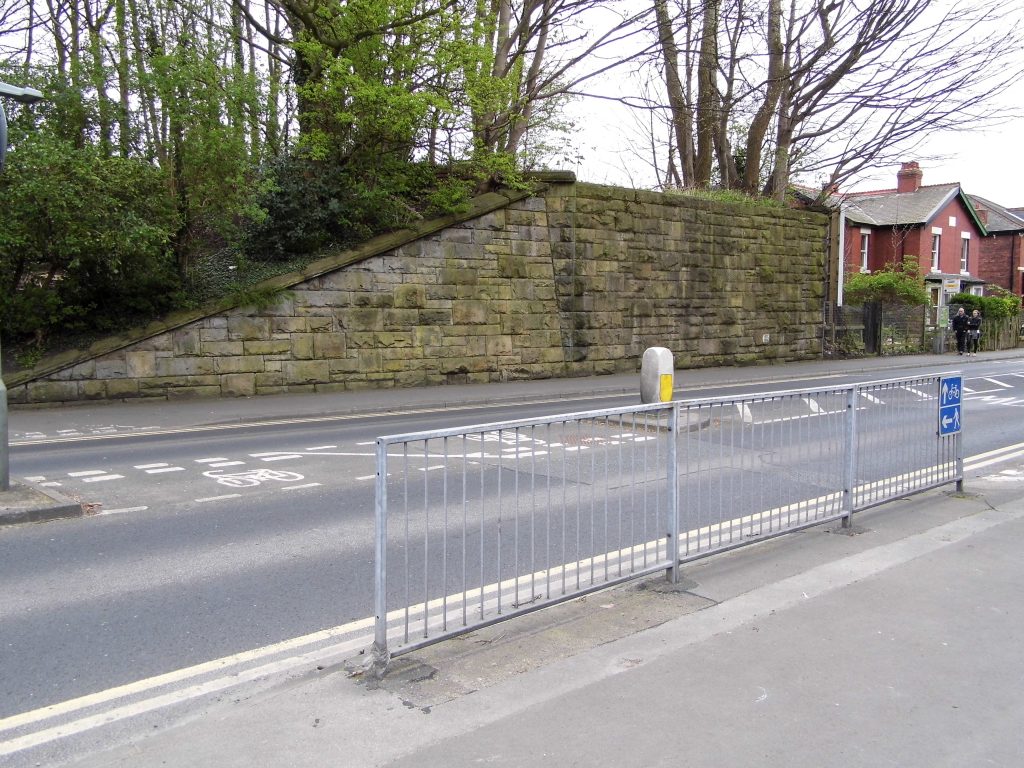
Former bridge abutments on Penwortham.
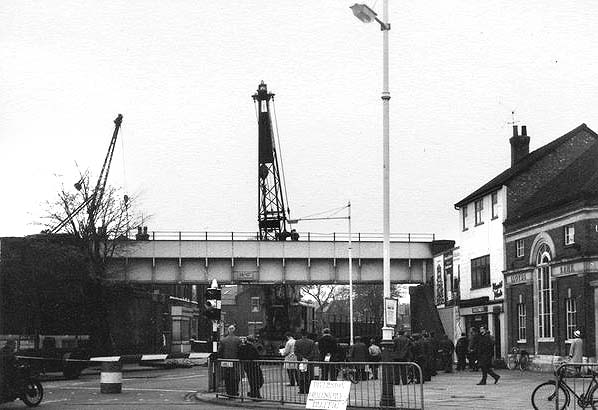
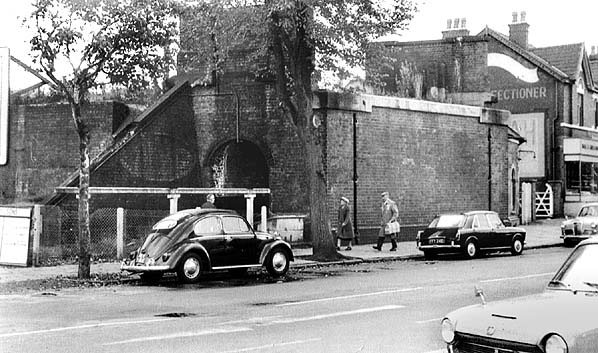
The overbridge at Churchtown Southport being dismantled in 1965.
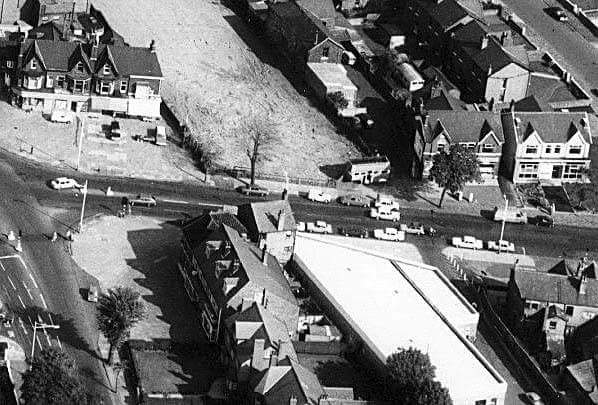
The former trackbed at Churchtown cleared of the embankment prior to the building of the Health Centre; a small supermarket already built on the South side of Cambridge Road.
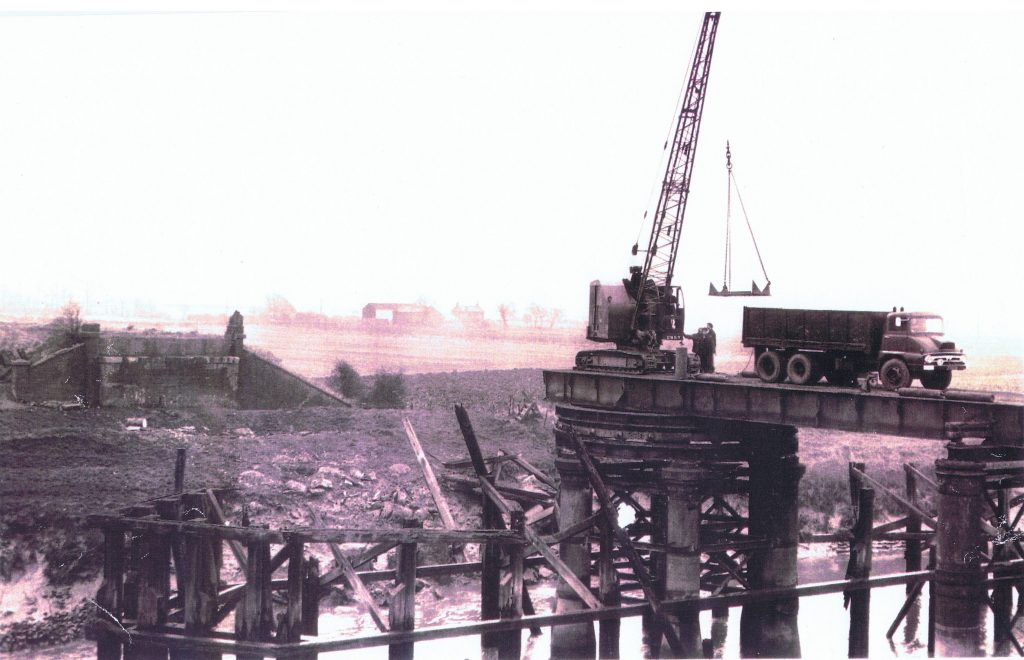
The Douglas River Bridge being dismantled only a year after closure.
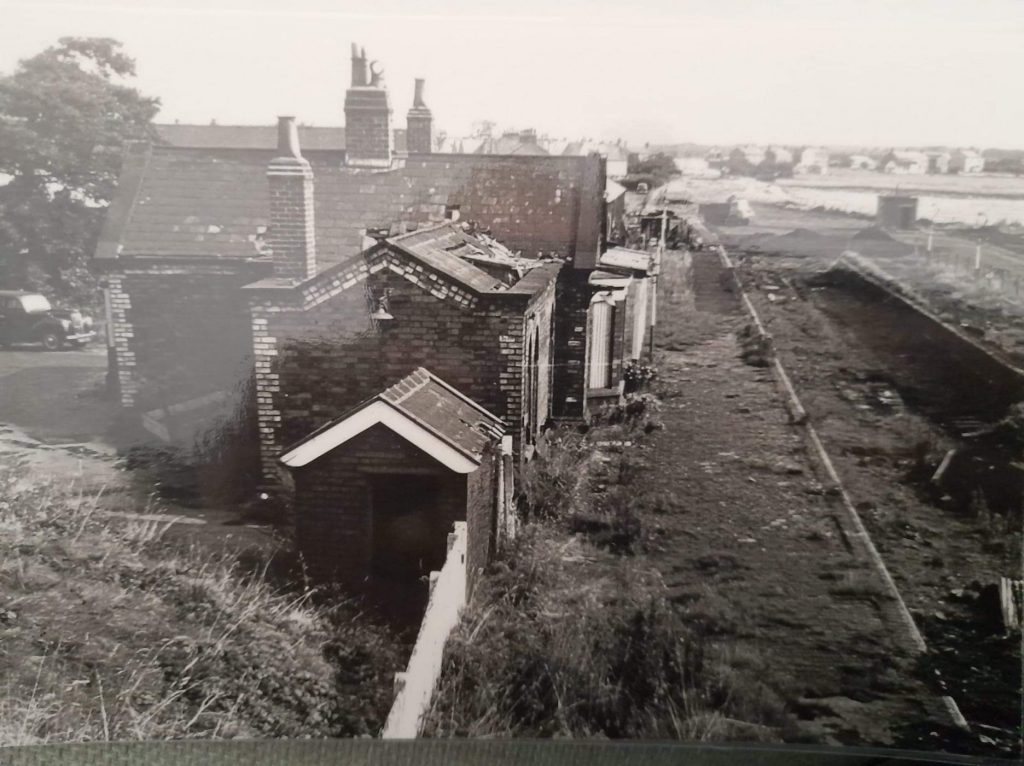
The remains of Crossens Station prior to redevelopment.
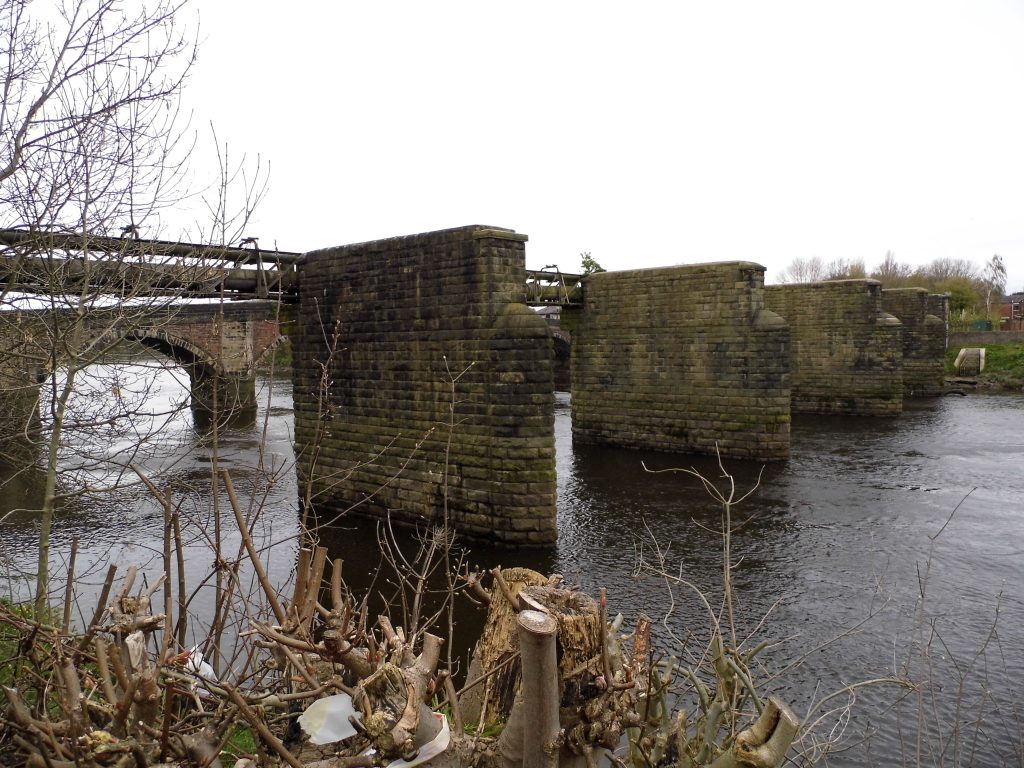
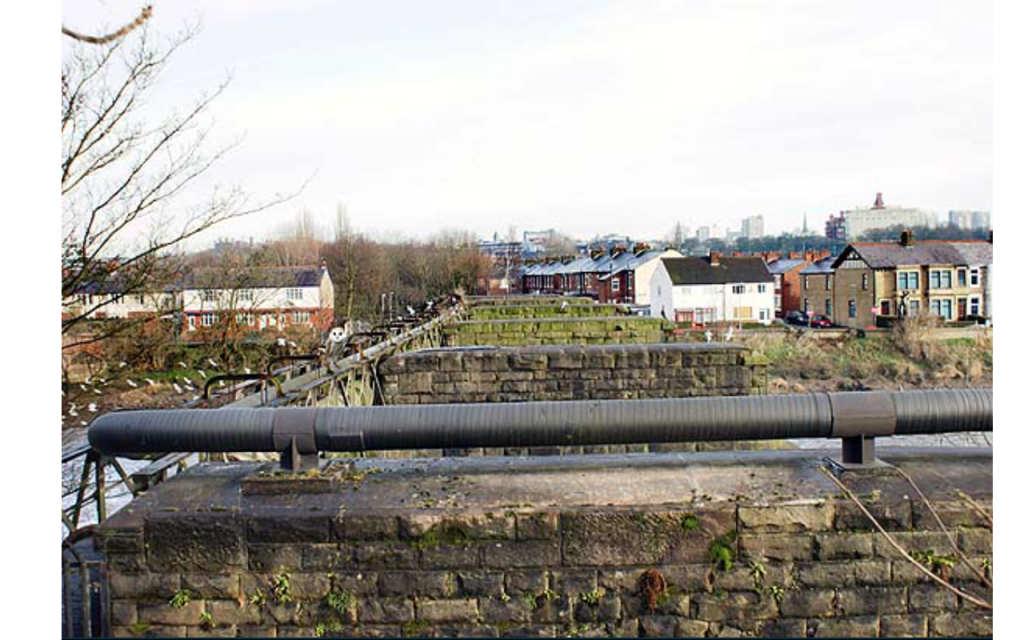
The original Viaduct supports for the West Lancs Line over the River Ribble into Fishergate Hill station still retained for utility infrastructure.
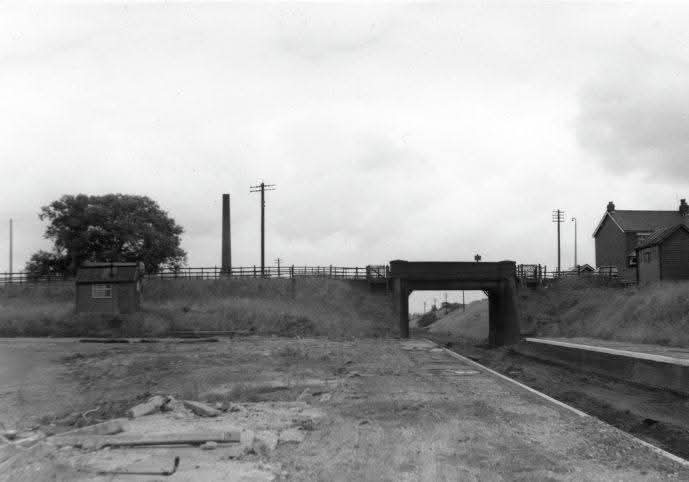
The site of Hesketh Bank Station stripped of it’s assets.
xxxxxxxxxxxxxxxxxxxxxxxxxx
This brief summary of the stations on the line has been compiled from photographs across the Internet and may include copyright images; it has not been possible however to confirm original copyright in most cases as many images are claimed by multiple persons whilst other don’t contain any accreditation.